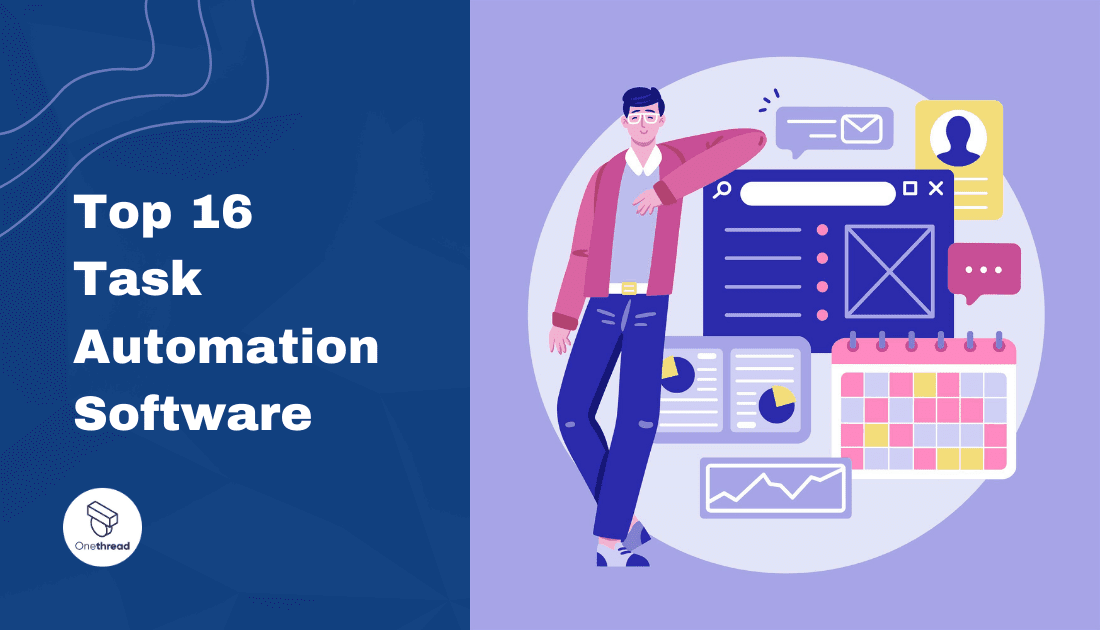In today’s fast-paced business world, task automation has become essential for enhancing productivity and streamlining workflows. Task automation software offer businesses the ability to automate repetitive and time-consuming tasks, allowing employees to focus on more strategic and value-added activities.
In this ultimate guide, we will explore the world of task automation software, its significance in modern workplaces, and how it can benefit businesses across industries.
We will also provide a comprehensive overview of the best task automation software options for 2023. Let’s dive in.
Top 15 Task Automation Software for 2023: At A Glance
Here is a brief comparison of the top 15 Task Automation Software 2023.
Software | Automation Features | Pricing | Customer Rating (G2) | Customer Rating (Capterra) |
 | Simple drag-and-drop automation | Free to $399/month | 4.4/5 | 4.5/5 |
 | Connects apps and automates workflows | Free to $599/month | 4.6/5 | 4.5/5 |
 | Automates tasks across Microsoft 365 and third-party | Free to $5000/month | 4.3/5 | 4.3/5 |
 | Advanced automation with logical operations | Free to $299/month | 4.8/5 | 4.7/5 |
 | Simple drag-and-drop automation | Free to $399/month | 4.4/5 | 4.5/5 |
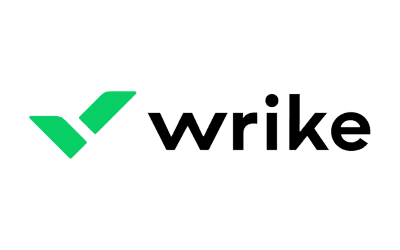 | Enterprise-grade automation platform | Custom pricing | 4.6/5 | 4.6/5 |
 | Flexible automation with code-level control | Custom pricing | 4.7/5 | 4.7/5 |
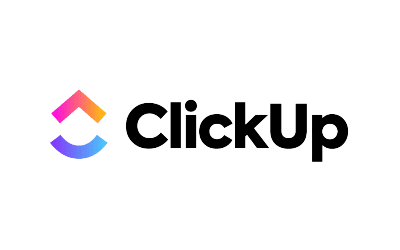 | Multi-step automation and triggers | $15 to $49/month | 4.8/5 | 4.8/5 |
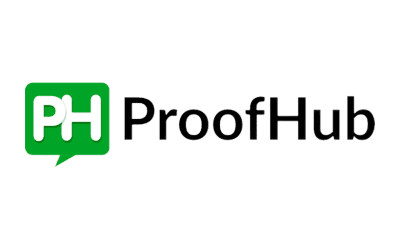 | Drag-and-drop automation for non-technical users | Custom pricing | 4.1/5 | 4.1/5 |
 | Drag-and-drop automation for non-technical users | Free to $49/month | 4.3/5 | 4.3/5 |
 | Code-level automation and extensive app library | Custom pricing | 4.7/5 | 4.7/5 |
 | Data integration and automation for big data projects | Free | 4.6/5 | 4.6/5 |
 | Business process automation and workflows | Custom pricing | 4.5/5 | 4.5/5 |
 | Connects apps and automates workflows | Free to $599/month | 4.6/5 | 4.5/5 |
 | Automates tasks across Microsoft 365 and third-party | Free to $5000/month | 4.3/5 | 4.3/5 |
Top 15 Task Automation Software for 2023: In Detail
This section will introduce and explore the top task automation software options for 2023. These software solutions offer a wide range of features and functionalities to help businesses automate their tasks and workflows.
#1. Onethread as a Task Automation Software
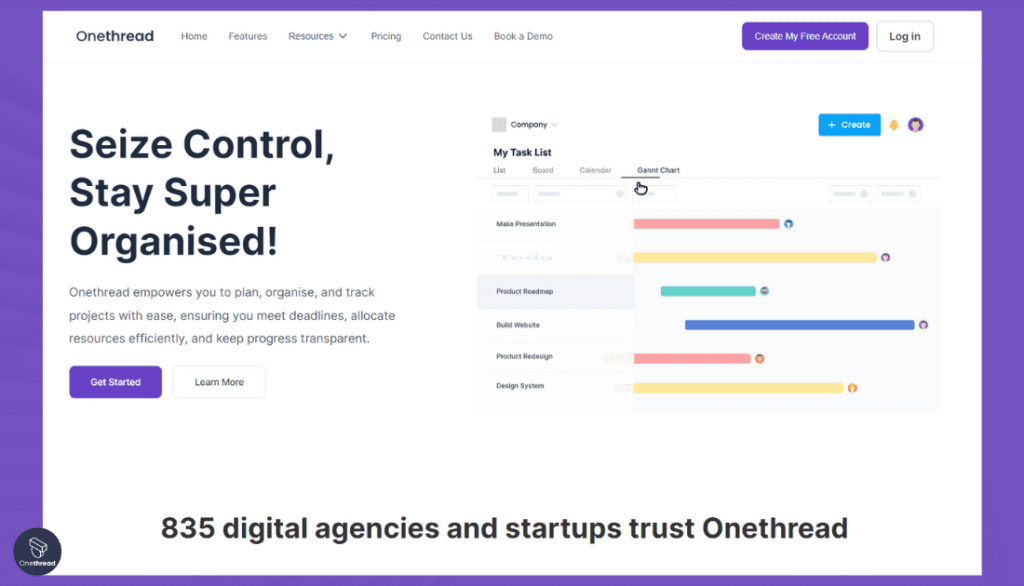
Onethread is an emerging task automation software that simplifies complex workflows and repetitive tasks within an organization. Designed to enhance productivity and streamline operations, Onethread offers an array of innovative features that facilitate seamless automation across different platforms and systems. Below is a detailed exploration of its features and how they contribute to task automation.
Key Features of Onethread
1. Integration with Multiple Platforms
Onethread supports integration with various popular platforms, enabling users to connect different tools and services they use daily.
Automation Benefit: This integration allows users to create cohesive workflows that transfer data and trigger actions across different platforms, thereby eliminating the need for manual interventions.
2. Workflow Builder
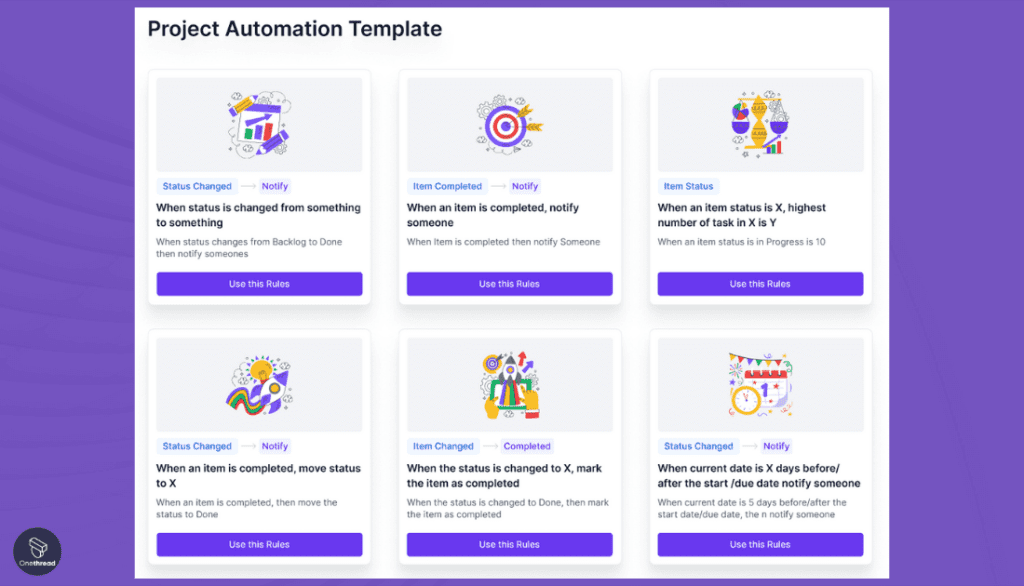
It comes with a visual workflow builder that lets users design and map out their workflows, complete with triggers, actions, and logical paths.
Automation Benefit: Automation Benefit: Even without coding knowledge, users can create complex automation workflows, but for those with coding experience, leveraging AI for coding can help enhance and optimize these tasks. This ensures that tasks are carried out automatically in sequence, based on specific triggers and conditions.
3. Conditional Logic and Filters
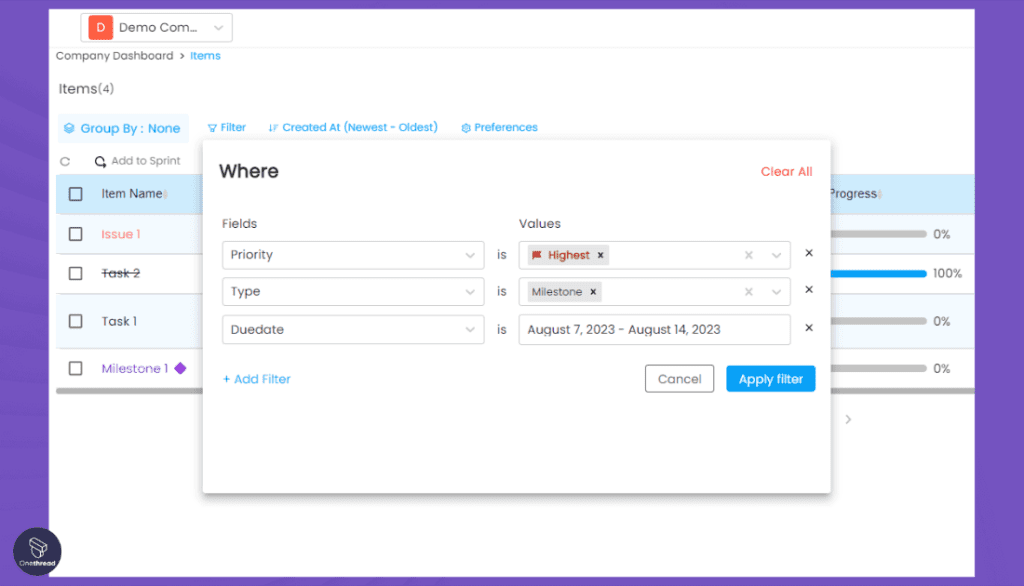
Onethread offers the ability to set specific conditions and filters that determine when certain actions are executed within a workflow.
Automation Benefit: This ensures that automated tasks are performed only when certain conditions are met, enhancing precision and reducing the chance of errors.
4. Real-Time Monitoring and Analytics
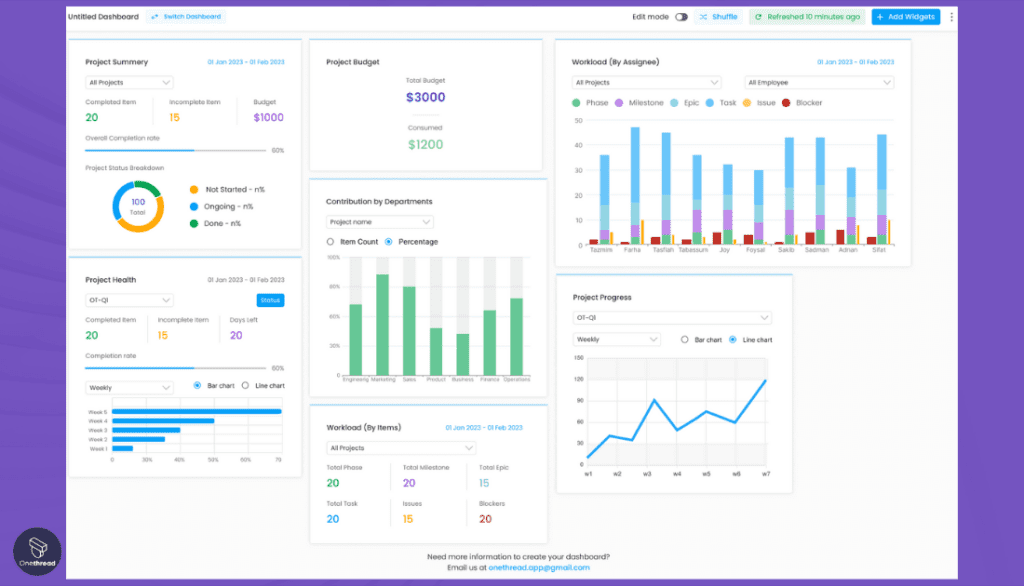
Users can monitor the performance of their automation workflows and analyze efficiency through detailed analytics.
Automation Benefit: This helps in identifying bottlenecks and areas of improvement, allowing for continuous optimization of automated processes.
5. Collaboration and Team Management
Onethread includes features that enable team collaboration, such as shared workflows, comments, and permissions.
Automation Benefit: By allowing team members to work together on automation, Onethread facilitates the collective refinement and maintenance of automated workflows.
6. Error Handling and Notifications
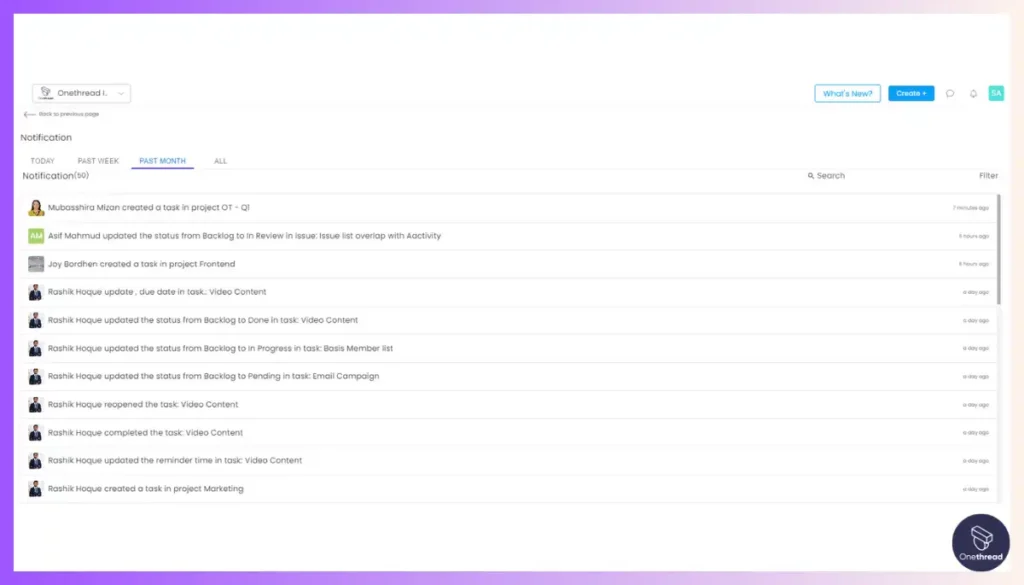
It provides robust error handling mechanisms, including alerts and notifications, for failed tasks.
Automation Benefit: Quick identification and resolution of issues in automation workflows help maintain smooth and uninterrupted operations.
7. Security and Compliance
Onethread is built with robust security features and complies with various industry standards.
Automation Benefit: Ensuring secure and compliant automation practices is critical in maintaining the integrity and confidentiality of automated processes.
Pricing Plans and Options
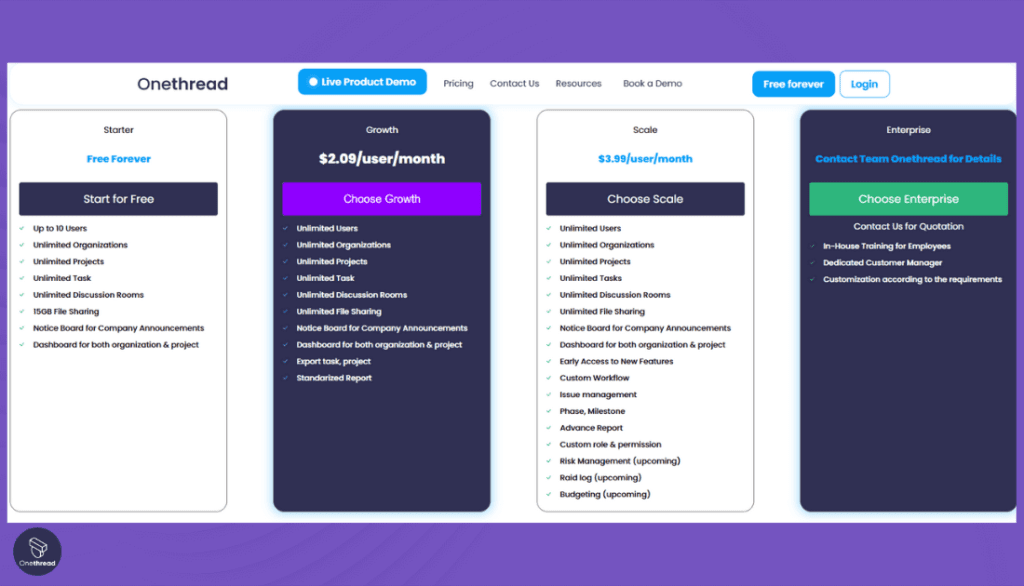
Onethread offers flexible pricing plans to accommodate businesses of all sizes.
Free Plan
Business Plan: Starts from $2.99-3.99
- Starter: Free Forever
- Growth: $2.09/user/month (billed annually)
- Scale: $3.99/user/month (billed annually)
- Enterprise: Contact Team Onethread for details
User Ratings and Reviews
Users have praised Onethread for its user-friendly interface, powerful automation capabilities, and excellent customer support. Positive reviews and testimonials highlight the software’s effectiveness in streamlining workflows and improving team collaboration.
#2. Zapier
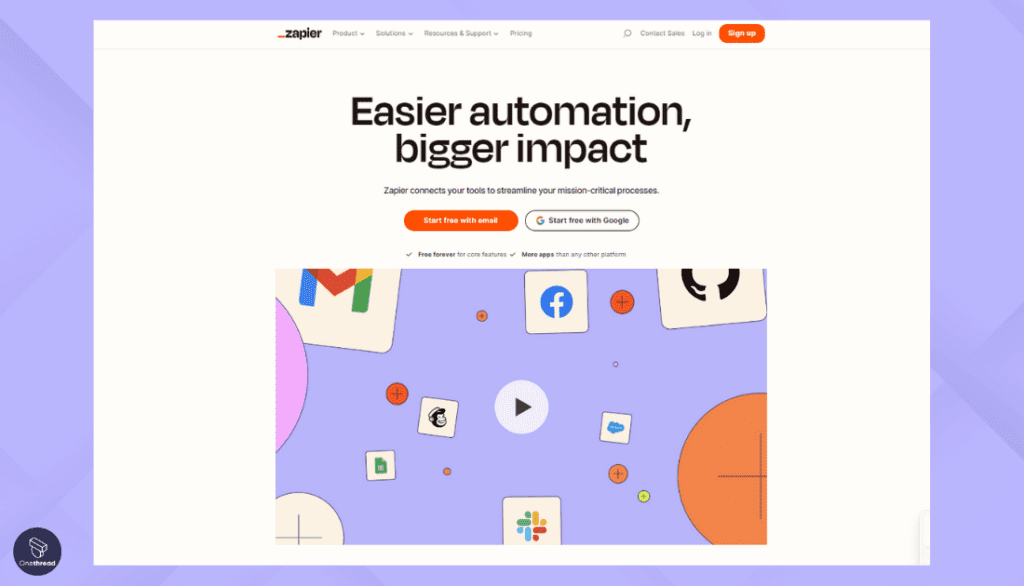
Zapier is a prominent online automation tool that enables businesses to connect their favorite apps, such as Gmail, Slack, MailChimp, and over 2,000 more. With a focus on enhancing productivity and efficiency, Zapier allows various apps to interact with one another, automating repetitive tasks without needing to write any code.
Features
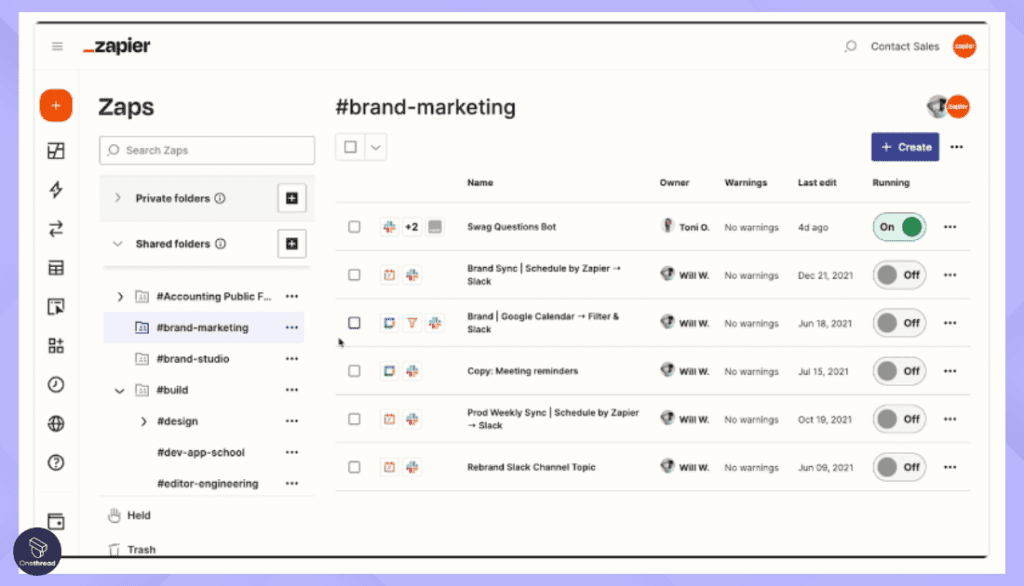
Easy Integration
Zapier supports integration with thousands of popular apps, allowing users to automate workflows across different platforms easily.
Multi-Step Zaps
Create complex workflows involving multiple steps and actions across various applications.
Built-in Apps
Zapier offers built-in apps like Formatter to transform data and built-in schedules to trigger actions at specified times.
Filters and Conditional Logic
Set conditions and filters to ensure that actions are only performed under certain circumstances.
Monitoring and Analytics
Keep track of tasks, analyze performance, and receive notifications on failed tasks.
Pricing Plans
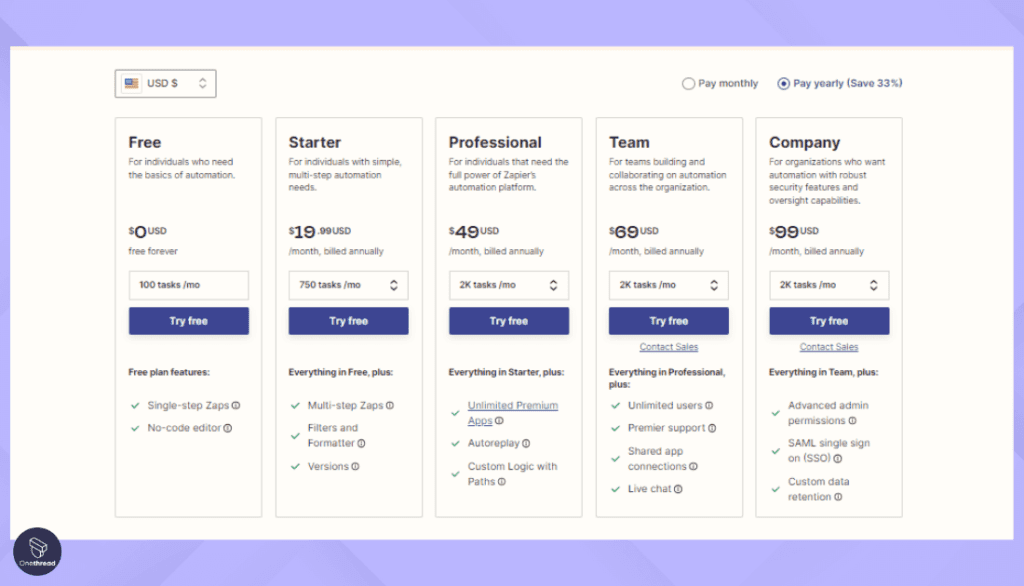
- Free Plan: Limited Zaps and updates every 15 minutes.
- Starter Plan: $19.99/month – Basic features, more Zaps, and premium app access.
- Professional Plan: $49/month – Advanced features, unlimited Zaps, and higher limits.
- Team Plan: $69/month – Collaboration features, premium support, and high limits.
- Company Plan: Custom pricing for enterprise-level needs.
Customer Rating and Reviews
G2 Rating: 4.4 out of 5
Capterra Rating: 4.5 out of 5
#3. Tallyfy
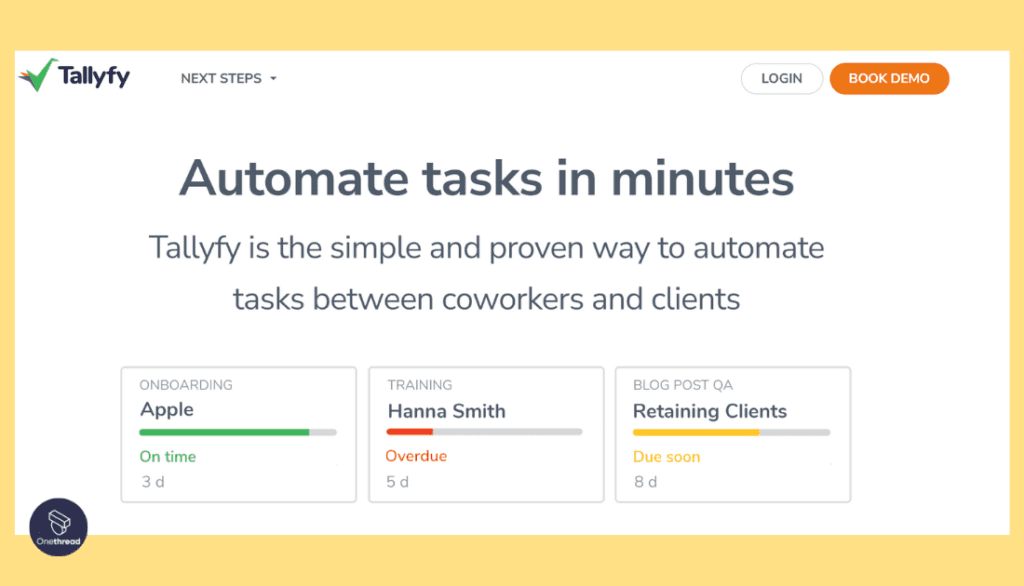
Tallyfy is a comprehensive task automation software that simplifies and optimizes business processes. Its intuitive interface and robust features make it a popular choice for organizations seeking to automate their tasks.
Tallyfy Key Features and Functionality
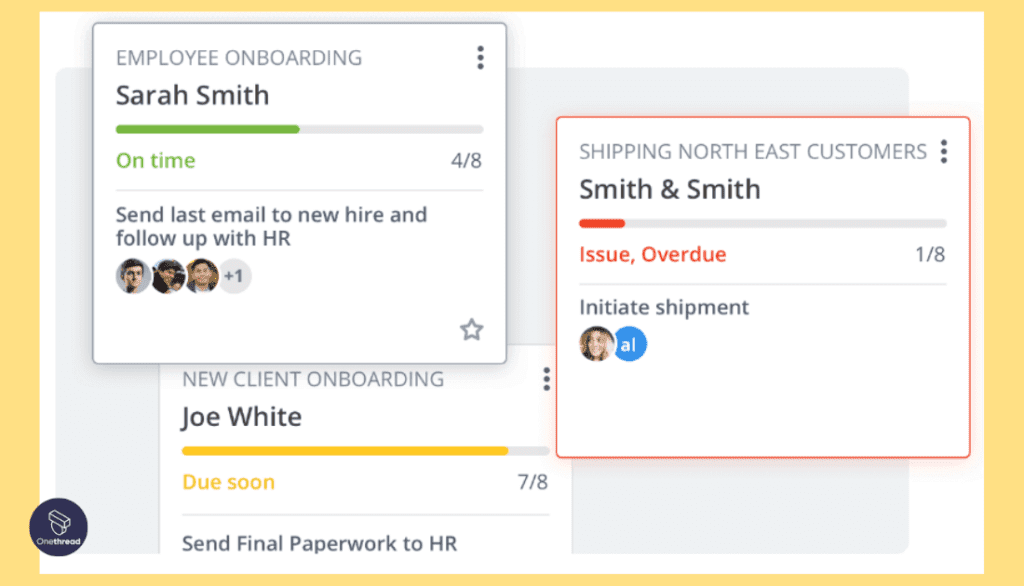
- Process Automation: Tallyfy enables businesses to automate complex processes, reducing manual errors and increasing efficiency.
- Task Tracking and Management: With Tallyfy, teams can track and manage tasks effectively, ensuring transparency and accountability.
- Custom Workflows: Tallyfy allows businesses to create custom workflows tailored to their specific needs, ensuring optimal task automation.
- Notifications and Reminders: Tallyfy sends notifications and reminders to keep teams updated and ensure timely task completion.
Pricing Details and Subscription Plans
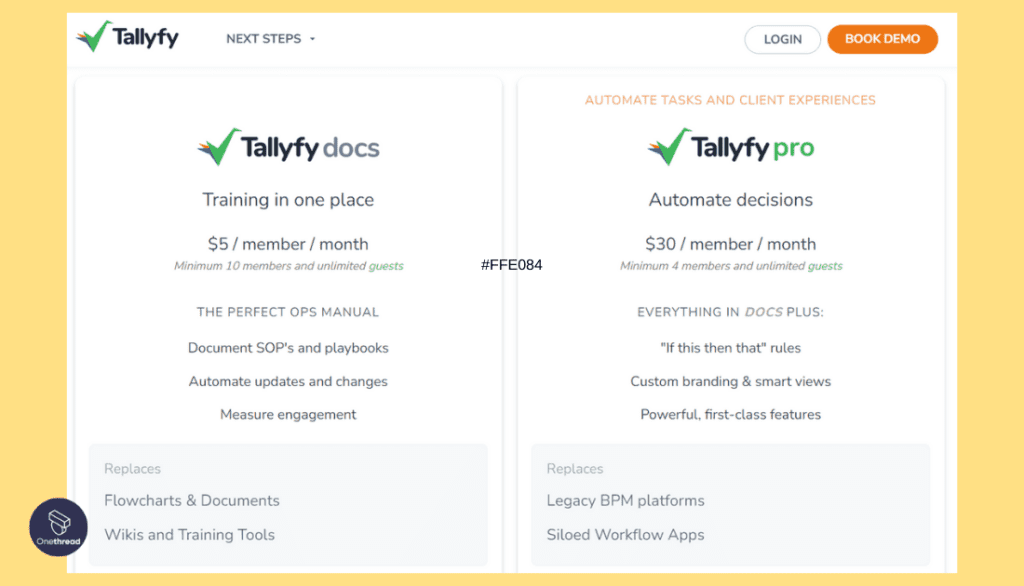
Tallyfy offers flexible pricing options, including different subscription plans to suit businesses’ varying needs and budgets. From basic plans ($5.00) for small teams to enterprise-level packages ($30), Tallyfy provides scalable pricing options.
Customer Ratings and Testimonials
Users have praised Tallyfy for its intuitive interface, ease of use, and powerful automation capabilities. Testimonials highlight the software’s ability to streamline processes, improve team collaboration, and enhance overall productivity.
#4. Zoho Flow
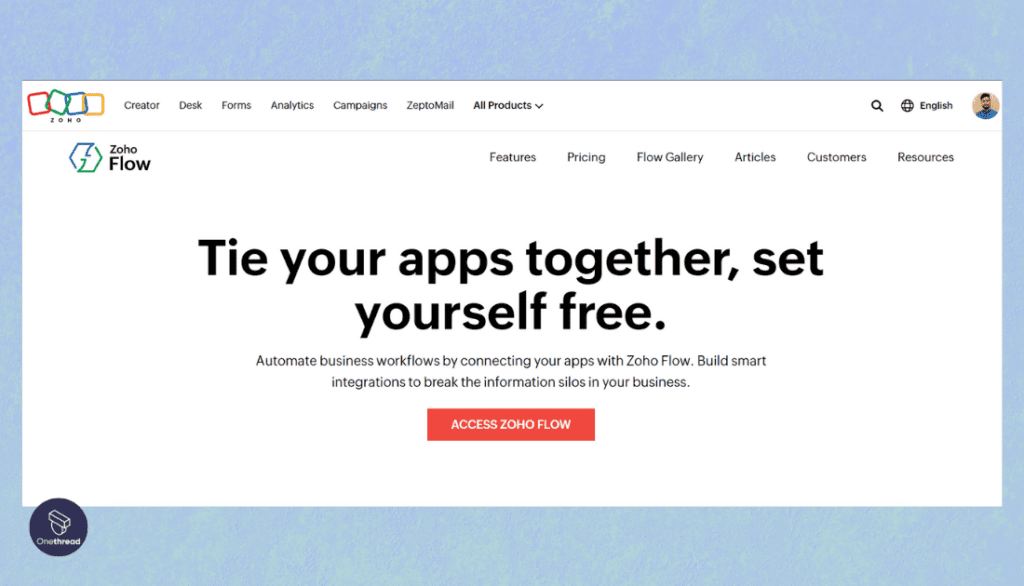
Zoho Flow is a versatile task automation software that allows businesses to connect and automate their favorite apps and services. With its wide range of features and integrations, Zoho Flow offers businesses a comprehensive automation solution.
Overview of Zoho Flow’s Features and Integrations
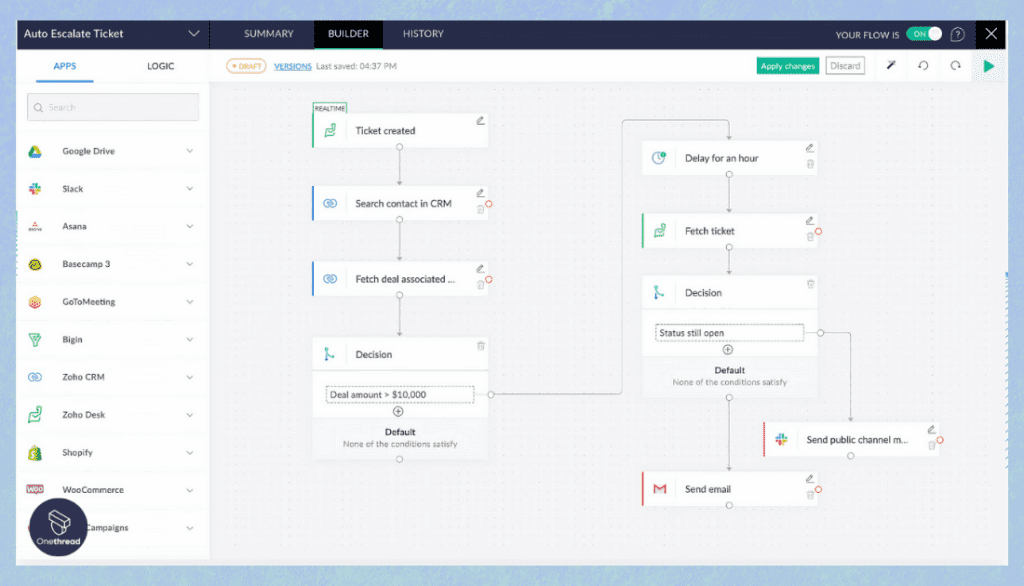
- App Integrations: Zoho Flow integrates with hundreds of popular applications, allowing businesses to automate tasks across multiple platforms.
- Conditional Workflows: Zoho Flow enables businesses to create conditional workflows based on specific triggers and actions.
- Customizable Automation: With Zoho Flow, businesses can customize their automation to suit their unique requirements and processes.
- Multi-step Workflows: Zoho Flow supports multi-step workflows, enabling the automation of complex processes involving multiple tasks and actions.
Pricing Tiers and Package Options
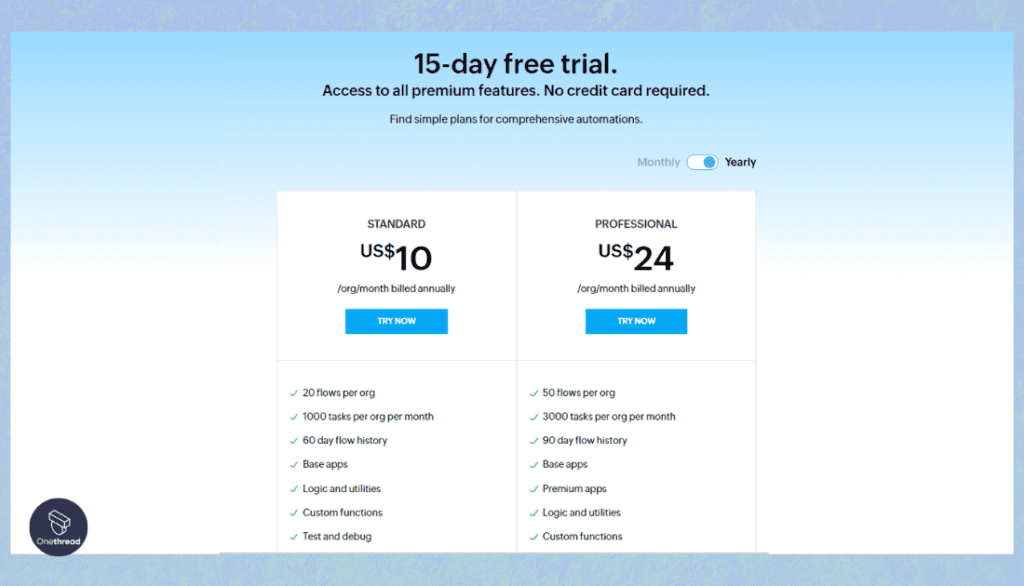
Zoho Flow offers different pricing tiers to accommodate businesses of all sizes. The standard plan is $10, and the professional plan is $24.
User Reviews and Feedback
Users have commended Zoho Flow for its extensive integrations, user-friendly interface, and seamless automation capabilities. Positive user reviews highlight the software’s ability to simplify complex workflows and streamline business processes.
#5. Jira
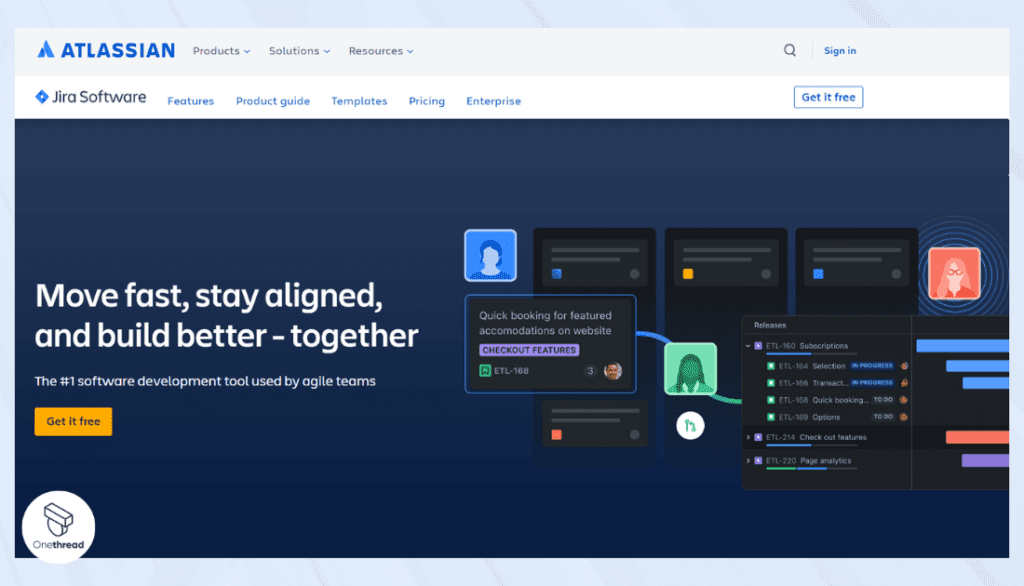
Jira, developed by Atlassian, is a popular task automation software widely used in software development and project management. It offers powerful automation features and customization options, making it a preferred choice for agile teams.
Jira’s Task Automation Capabilities and Customization Options
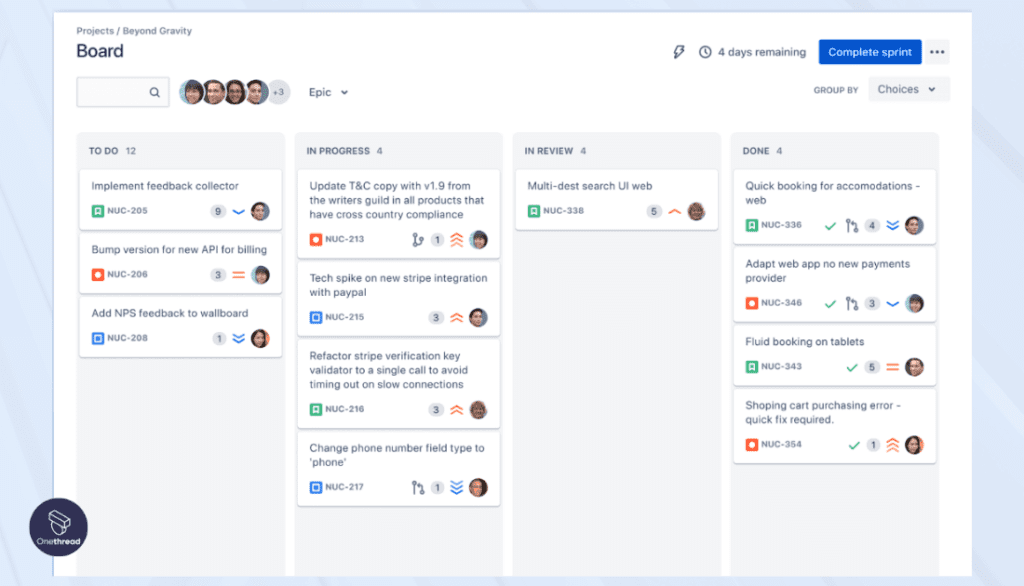
- Issue Tracking and Automation: Jira enables teams to track and automate their tasks and issues, ensuring transparency and accountability.
- Workflow Customization: Jira allows businesses to customize workflows based on their specific processes and requirements, optimizing task automation.
- Automation Rules: With Jira’s automation rules, businesses can automate repetitive tasks, reduce manual effort, and improve team efficiency.
- Integration with Development Tools: Jira seamlessly integrates with popular development tools, enabling end-to-end automation in software development projects.
Pricing Structure and Licensing Models
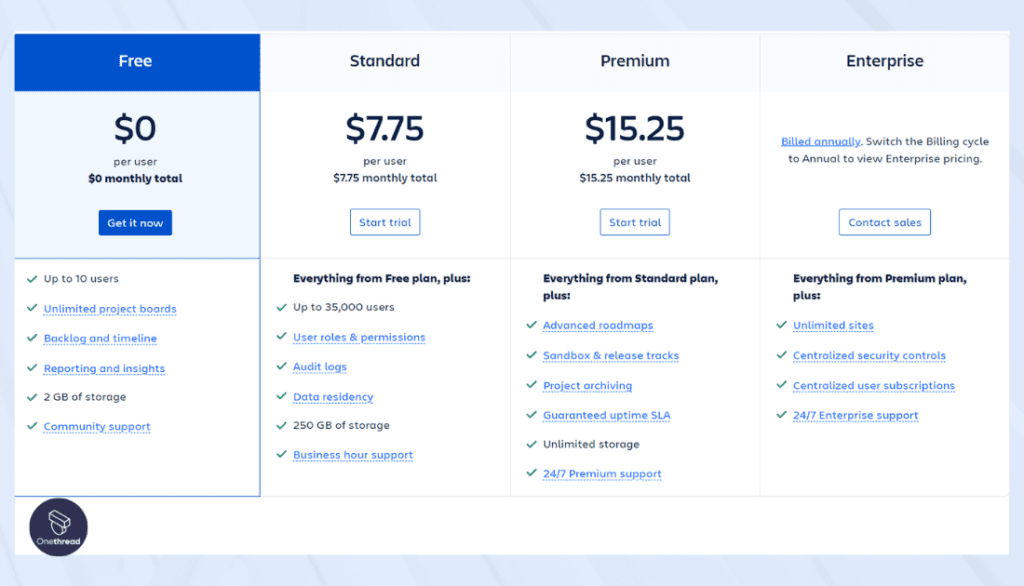
Jira offers various pricing options, including subscription-based licensing models. The pricing structure is based on the number of users and the edition (such as Jira Free, Jira Standard $21, or Jira Premium $47) chosen by the business.
User Satisfaction Scores and Reviews
Jira has received positive reviews for its robust automation capabilities, flexibility, and scalability. Users have praised its ability to streamline workflows, improve collaboration, and provide powerful project management features.
#6. Wrike
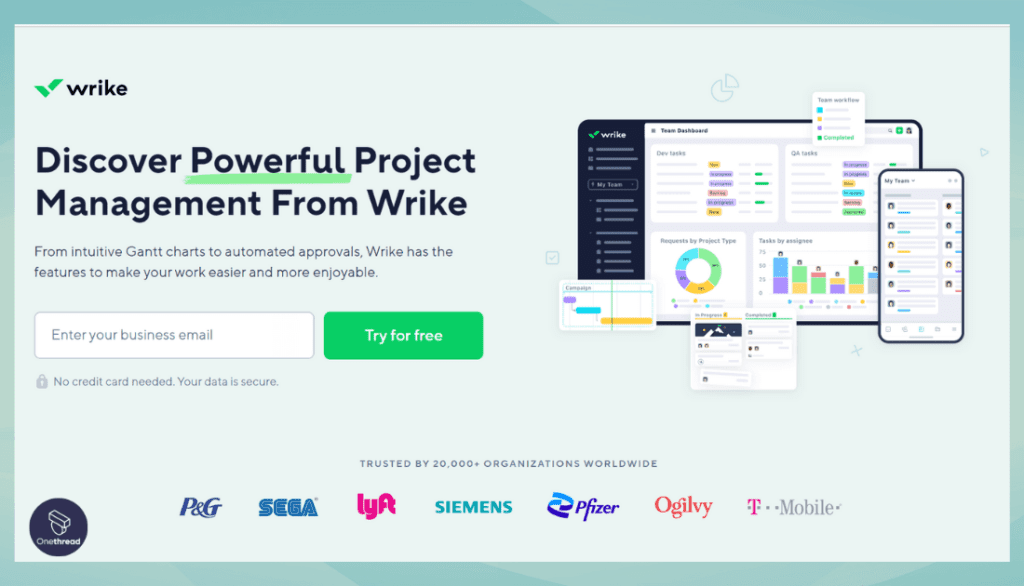
Wrike is a comprehensive task automation software offering many features to streamline workflows and enhance team collaboration. Its user-friendly interface and customizable automation options make it a preferred choice for businesses.
Understanding Wrike’s Task Automation Features
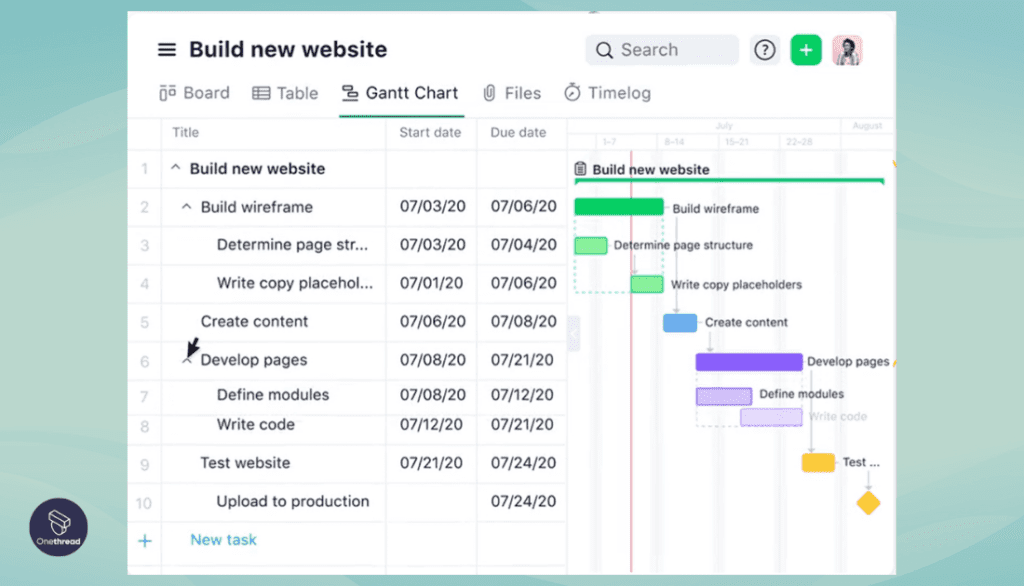
- Task Management and Collaboration: Wrike allows businesses to manage tasks, collaborate effectively, and track progress in real-time.
- Customizable Workflows: With Wrike, businesses can create custom workflows to automate their unique processes and optimize task management.
- Automation Rules: Wrike’s automation rules enable businesses to automate repetitive tasks, saving time and improving productivity.
- Project Reporting and Analytics: Wrike provides robust reporting and analytics features to gain insights into project performance and make data-driven decisions.
Pricing Information and Subscription Levels
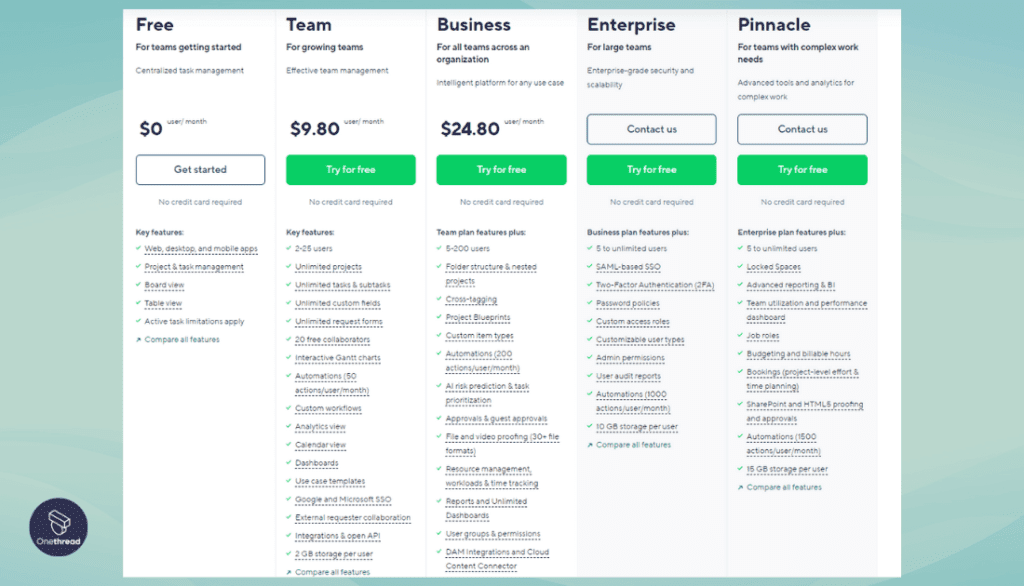
Wrike offers flexible pricing options, including different subscription levels tailored to the needs of different-sized businesses. You can choose from Free to Team $9.80 and Business $24.80.
User Feedback and Satisfaction Metrics
Users have praised Wrike for its intuitive interface, extensive task management capabilities, and seamless collaboration features. Positive feedback highlights the software’s ability to streamline workflows, improve team productivity, and provide a centralized project management and collaboration platform.
Reviews
Customers often praise Zapier for its robust functionality and ease of use. The wide array of supported apps and the ability to create complex automated workflows without coding are frequently highlighted.
Some users have mentioned limitations in error handling and the need for a more intuitive user interface. Pricing can also be a concern for small businesses or individuals.
#7. LeapWork
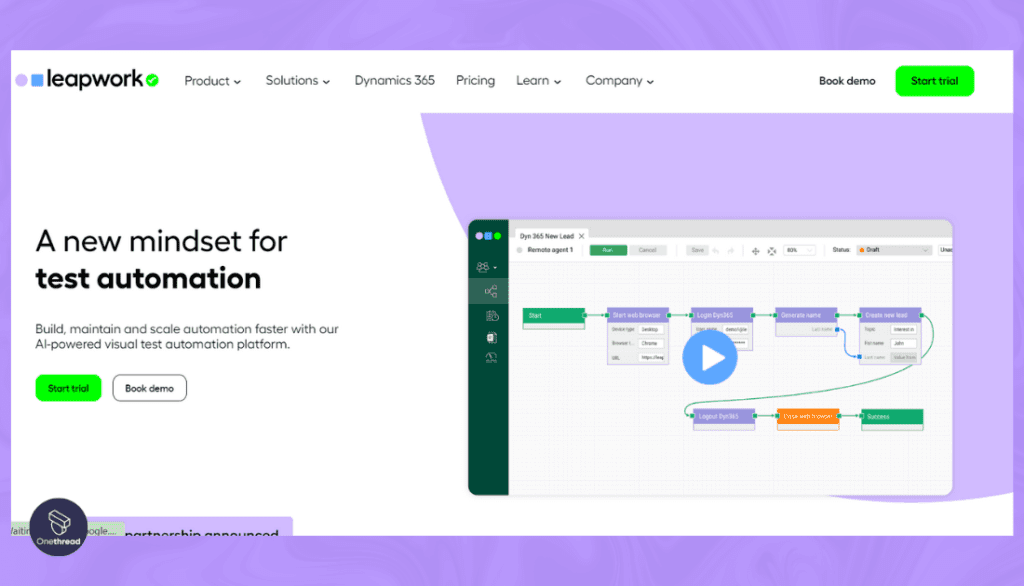
LeapWork is a powerful task automation software that allows businesses to automate repetitive tasks and optimize their workflows. It offers a range of key features, making it a valuable tool for improving efficiency and productivity.
Key Features of LeapWork for Task Automation
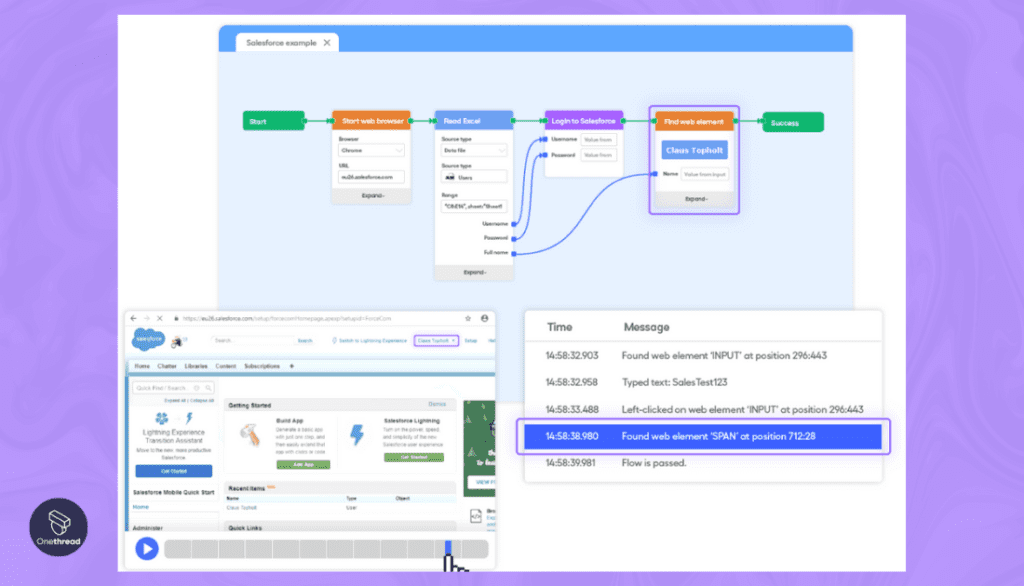
- No-Code Automation: LeapWork’s no-code automation platform allows businesses to automate tasks without the need for complex coding or programming skills.
- Test Automation: With LeapWork, businesses can automate testing processes, ensuring the quality and reliability of their software applications.
- Web Automation: LeapWork supports web automation, enabling businesses to automate web-based tasks and processes.
- Image and Text Recognition: LeapWork’s advanced image and text recognition capabilities allow businesses to automate tasks that involve visual or textual elements.
Pricing Plans and Enterprise Editions
LeapWork offers various pricing plans and enterprise editions to cater to businesses of different sizes and needs. The flexible pricing structure allows businesses to choose a plan that aligns with their budget and requirements.
User Ratings and Success Stories
Users have praised LeapWork for its user-friendly interface, robust automation capabilities, and excellent customer support. Success stories highlight how LeapWork has helped businesses save time, reduce errors, and increase productivity through task automation.
#8. ClickUp
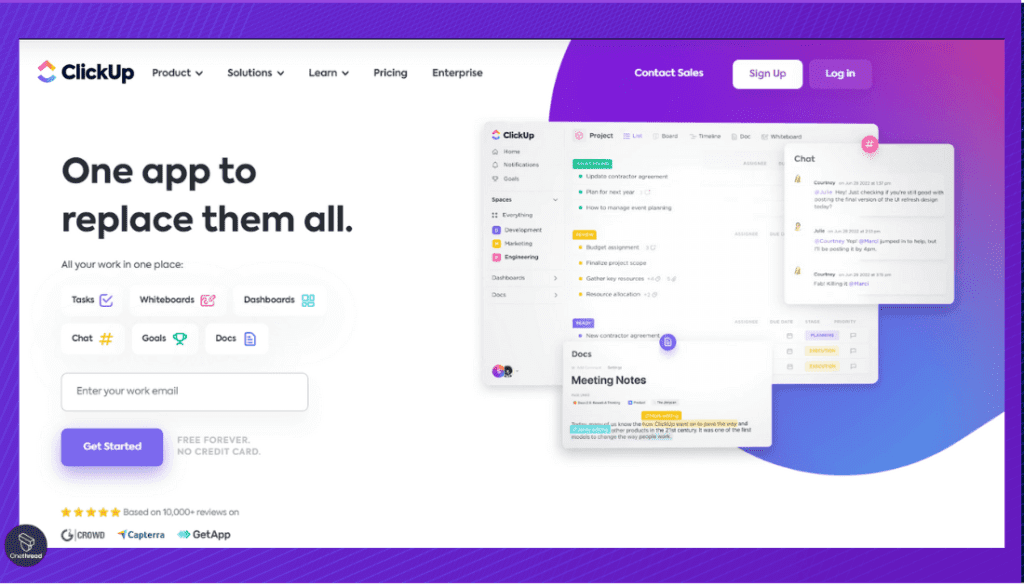
ClickUp is a versatile task automation software that provides a comprehensive solution for managing tasks, projects, and workflows. It offers a wide range of features designed to enhance productivity and collaboration within teams.
Key Features of ClickUp
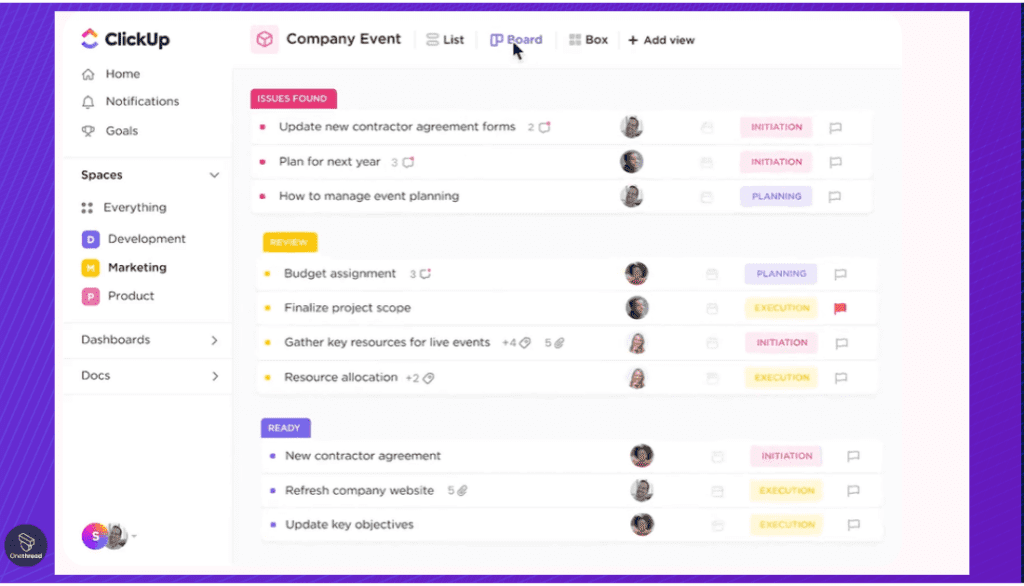
- Task Management: ClickUp allows businesses to manage tasks efficiently, assign responsibilities, and track progress in a centralized platform.
- Workflow Automation: ClickUp’s automation features enable businesses to automate repetitive tasks and streamline their workflows.
- Collaboration Tools: ClickUp provides a suite of collaboration tools, including real-time messaging, document sharing, and commenting features.
- Integrations: ClickUp integrates with popular business tools and applications, allowing seamless data transfer and synchronization of workflow.
Pricing Plans and Options
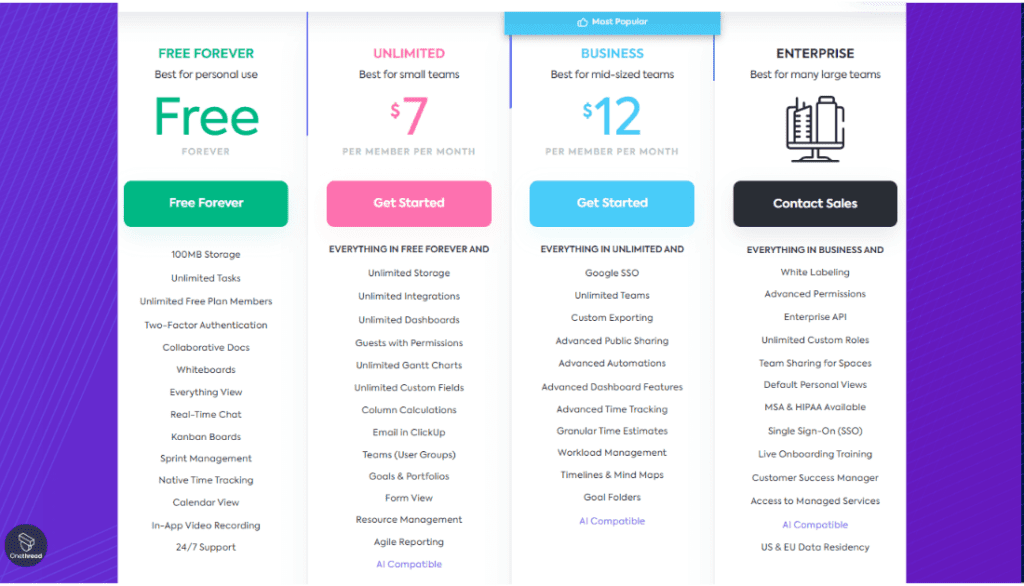
ClickUp offers flexible pricing plans to accommodate businesses of all sizes. From free plans for small teams to enterprise-level packages ($5 to $19), ClickUp provides options for businesses with varying needs and budgets.
User Ratings and Reviews
Users have praised ClickUp for its intuitive interface, extensive feature set, and customizable task management capabilities. Positive reviews highlight how ClickUp has improved team productivity, streamlined workflows, and provided a centralized platform for collaboration.
#9. ProofHub
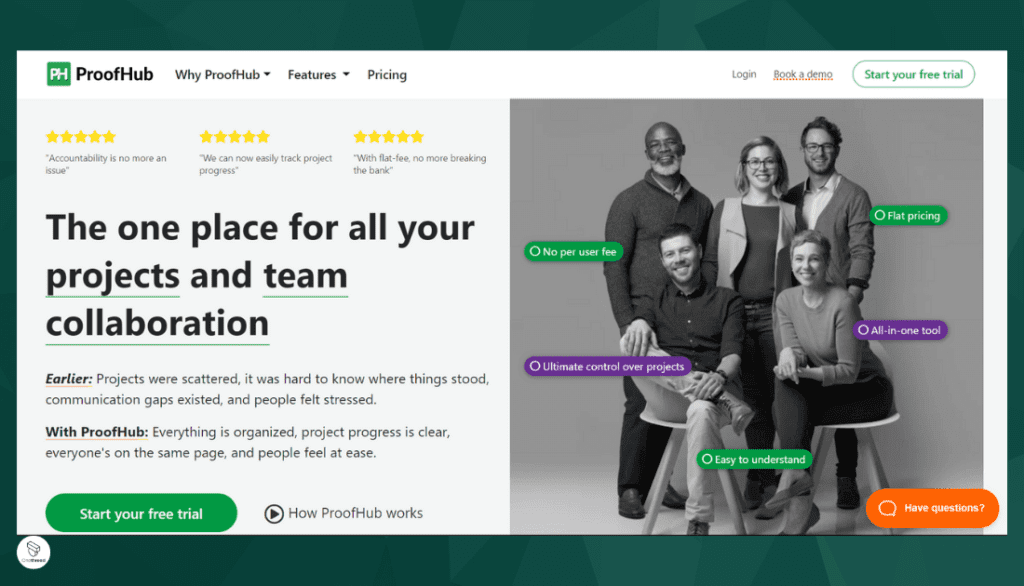
ProofHub is a comprehensive task automation software that combines project management, collaboration, and task management features into a single platform. It offers a range of tools and functionalities designed to simplify workflows and enhance team productivity.
ProofHub Key Features and Functionality
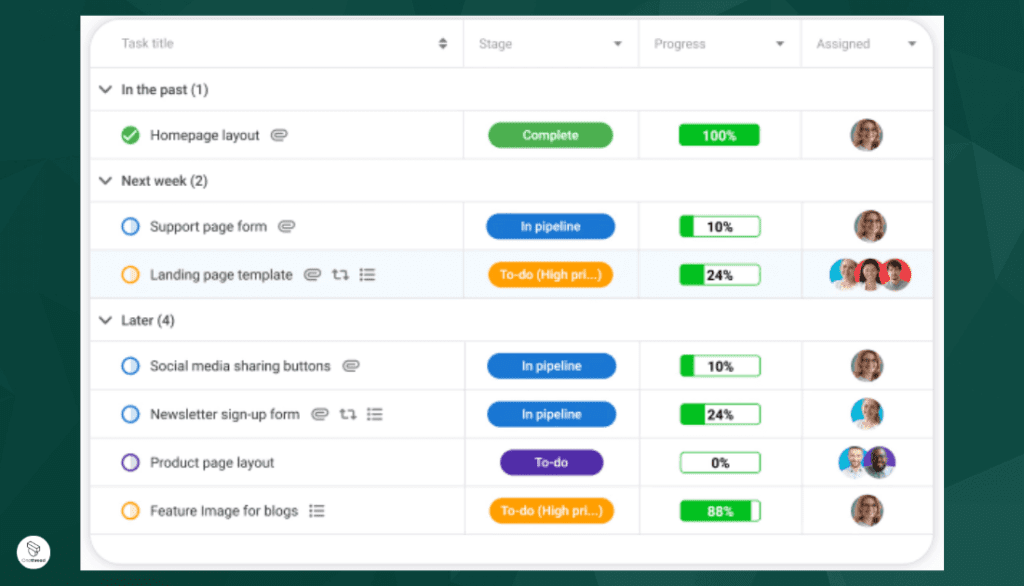
- Project Management: ProofHub allows businesses to plan, organize, and track projects effectively, ensuring seamless collaboration and task management.
- Task Automation: With ProofHub, businesses can automate repetitive tasks, saving time and effort while maintaining accuracy.
- Communication and Collaboration: ProofHub provides features for team communication, file sharing, and document collaboration, fostering effective collaboration within teams.
- Time Tracking and Reporting: ProofHub’s time tracking and reporting features help businesses monitor project progress, track time spent on tasks, and generate insightful reports.
Pricing Details and Subscription Plans
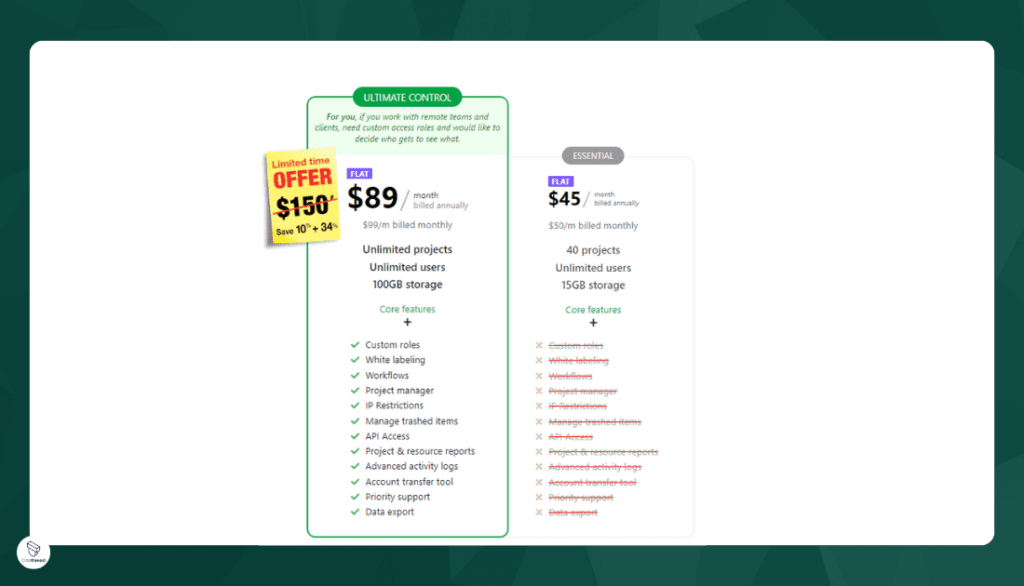
ProofHub offers various pricing plans ($45 to $89) to cater to businesses of different sizes and requirements. From small teams to large enterprises, ProofHub provides options for businesses to choose the most suitable plan for their task automation and project management needs.
Customer Ratings and Testimonials
Customers have praised ProofHub for its user-friendly interface, comprehensive feature set, and excellent customer support. Testimonials highlight how ProofHub has helped businesses streamline their workflows, improve team collaboration, and meet project deadlines efficiently.
#10. Power Automate
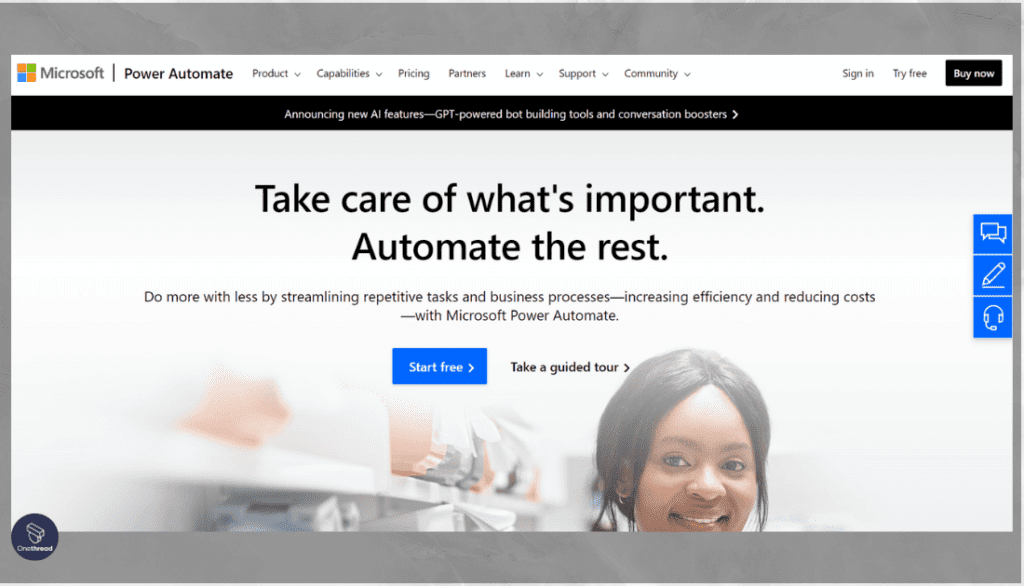
Power Automate, previously known as Microsoft Flow, is a robust task automation software that integrates seamlessly with Microsoft’s suite of productivity tools. It offers a range of automation capabilities to enhance productivity and streamline business processes.
Overview of Power Automate’s Features and Integrations
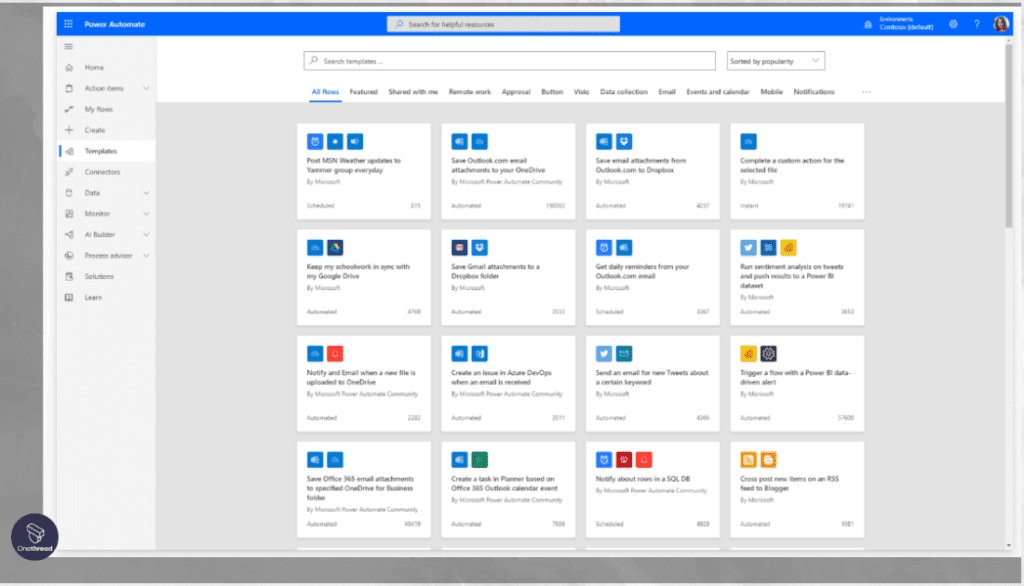
- Pre-built Templates: Power Automate provides a collection of pre-built templates that businesses can leverage to automate common tasks and processes.
- Integration with Microsoft Applications: Power Automate integrates with popular Microsoft applications such as Outlook, SharePoint, and Teams, allowing for seamless task automation within the Microsoft ecosystem.
- Custom Workflow Creation: Power Automate enables businesses to create custom workflows tailored to their specific requirements and processes.
- Data Connectors: Power Automate offers a wide range of data connectors that allow businesses to integrate with external applications and services.
Pricing Tiers and Package Options
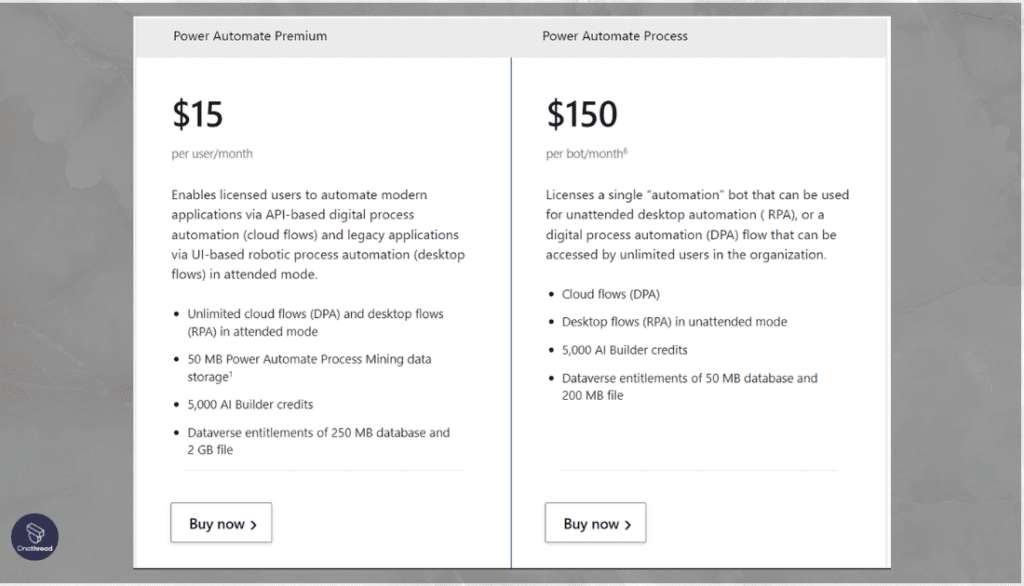
Power Automate offers different pricing tiers, including free and premium plans for $49, to cater to businesses of various sizes and needs. The flexible pricing structure allows businesses to choose a plan that aligns with their task automation requirements.
User Reviews and Feedback
Users have praised Power Automate for its seamless integration with Microsoft applications, user-friendly interface, and versatility in automating tasks and workflows. Positive feedback highlights how Power Automate has helped businesses automate repetitive processes, save time, and improve overall efficiency.
#11. Kissflow
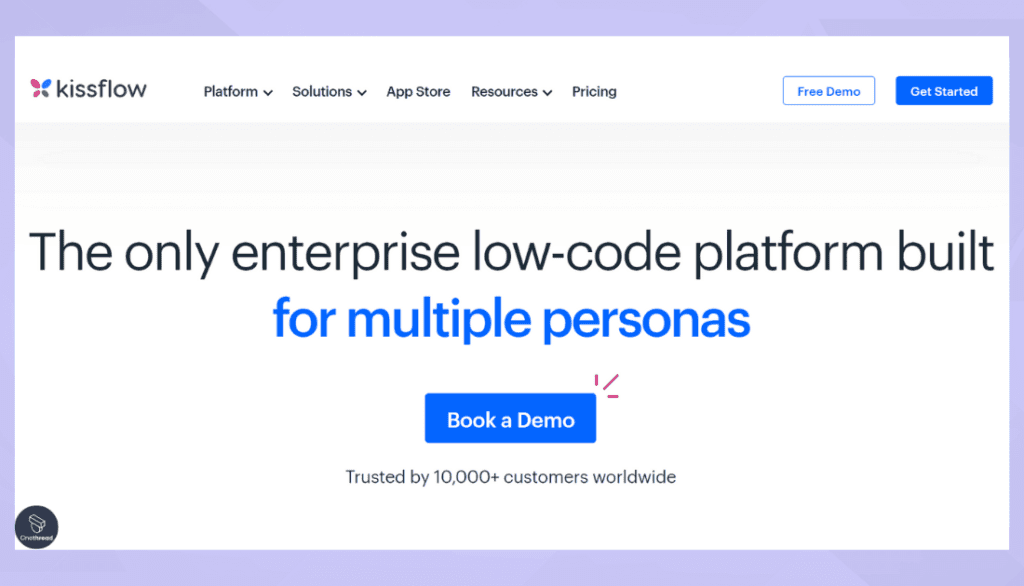
Kissflow is a comprehensive task automation software that combines workflow management, project tracking, and process automation features. It offers businesses a powerful tool to streamline their workflows and improve productivity.
Kissflow’s Task Automation Capabilities and Customization Options
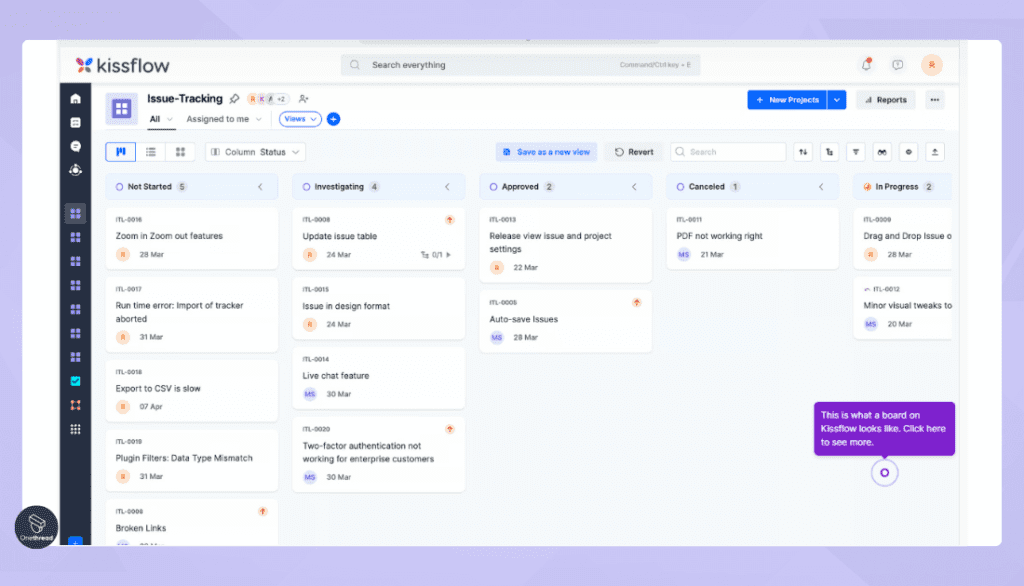
- Workflow Management: Kissflow allows businesses to design, manage, and automate their workflows, ensuring efficient task execution.
- Form and Document Automation: With Kissflow, businesses can automate form and document processes, reducing manual effort and ensuring data accuracy.
- Collaboration and Communication: Kissflow provides collaboration and communication tools to facilitate effective teamwork and streamline project execution.
- Analytics and Reporting: Kissflow offers analytics and reporting features that provide businesses with insights into workflow performance and identify areas for improvement.
Pricing Structure and Licensing Models
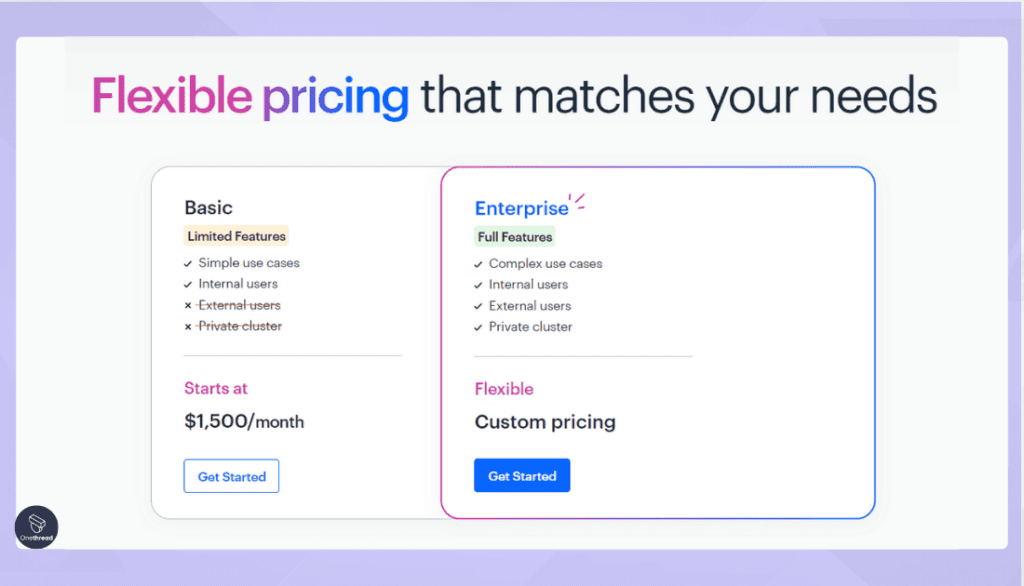
Kissflow offers flexible pricing options ($15 to $20), including subscription-based licensing models. The pricing structure is based on the number of users and the edition chosen by the business, catering to businesses of different sizes and budgets.
User Satisfaction Scores and Reviews
Users have expressed satisfaction with Kissflow’s ease of use, extensive automation capabilities, and customizable workflows. Positive reviews highlight how Kissflow has helped businesses automate their processes, improve collaboration, and achieve higher levels of productivity.
#12. Nintex
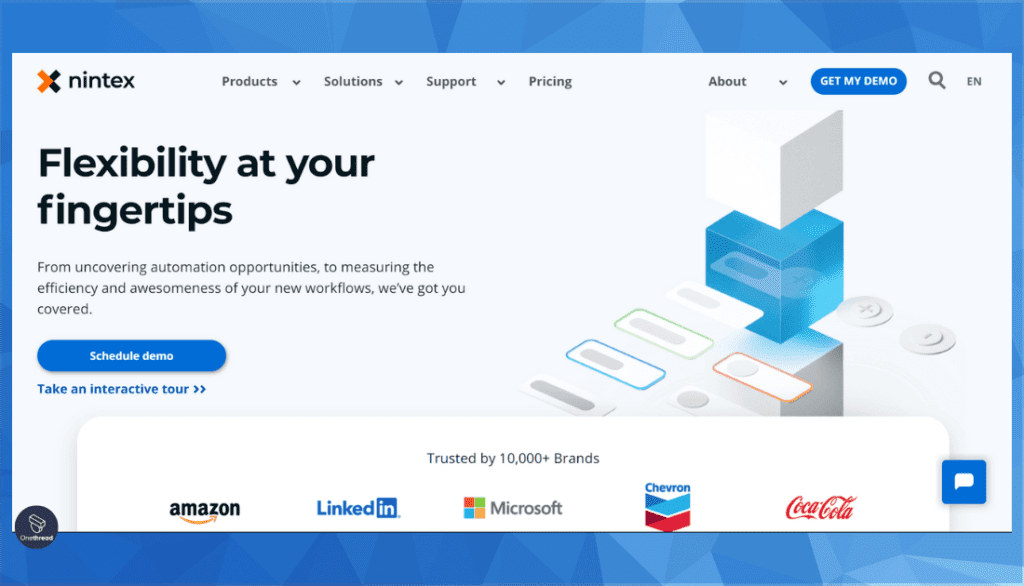
Nintex is a comprehensive task automation software designed to streamline business processes and enhance productivity. With its powerful automation features and user-friendly interface, Nintex offers businesses a valuable tool for optimizing their workflows.
Understanding Ninetex’s Task Automation Features
- Process Mapping and Automation: Nintex allows businesses to map out their processes visually and automate them, eliminating manual errors and increasing efficiency.
- Integration with Business Applications: Ninetex integrates with popular business applications such as SharePoint and Salesforce, enabling seamless task automation across multiple systems.
- Forms and Document Automation: Nintex offers features for automating forms and document processes, reducing manual effort and improving data accuracy.
- Workflow Analytics: Nintex provides analytics capabilities to monitor and optimize workflow performance, identifying bottlenecks and areas for improvement.
Pricing Information and Subscription Levels
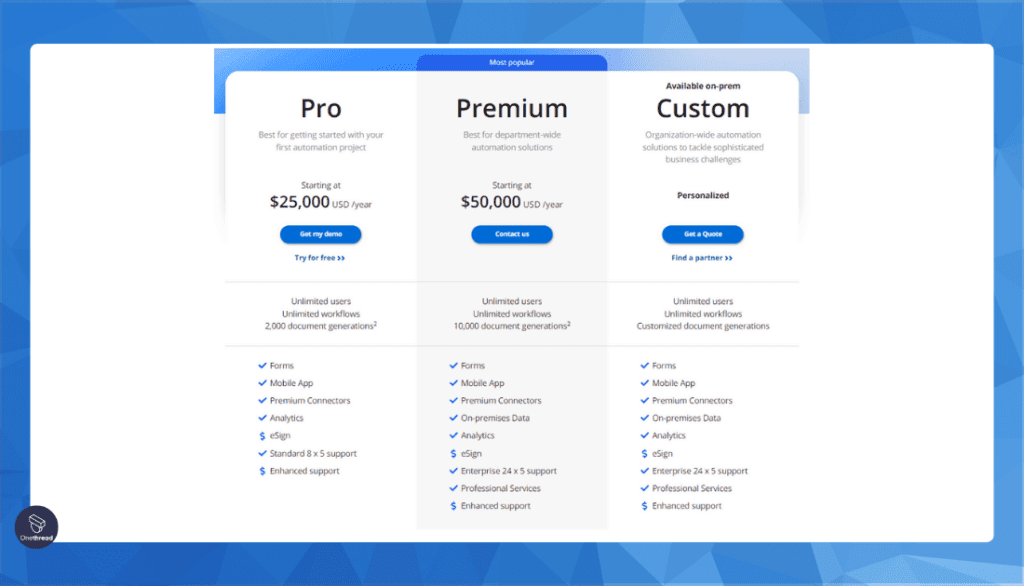
Nintex offers flexible pricing options, including different subscription levels to accommodate businesses of varying sizes and requirements. From small teams to large enterprises, Nintex provides scalable solutions for task automation.
User Feedback and Satisfaction Metrics
Users have praised Ninetex for its powerful automation capabilities, intuitive interface, and excellent customer support. Positive user feedback highlights how Nintex has improved business processes, reduced costs, and increased productivity through task automation.
#13. Trello
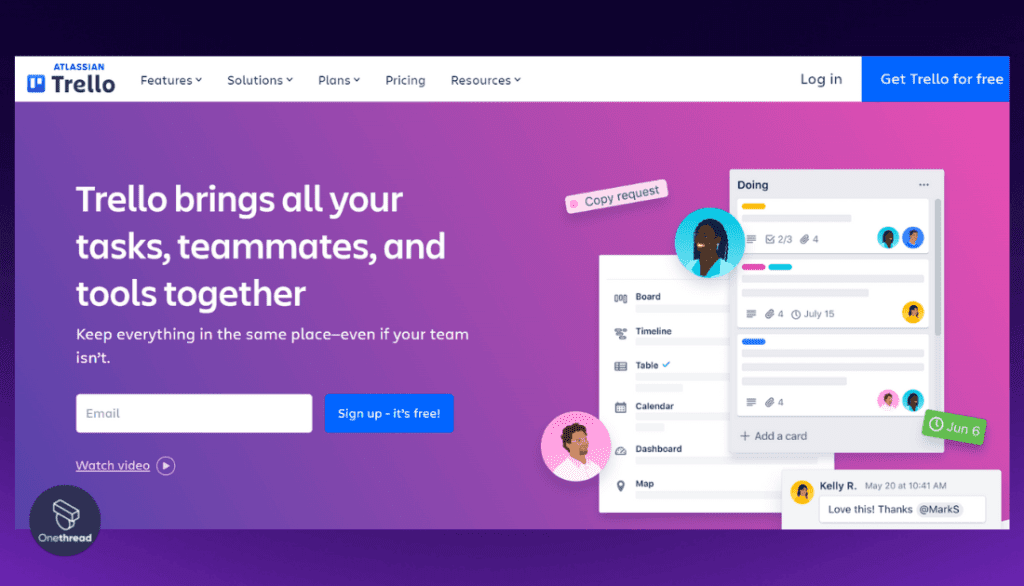
Trello is a popular task management software that offers a simple and visual way to manage tasks, projects, and workflows. While not primarily focused on automation, Trello provides features that can be used to automate certain aspects of task management.
Key Features of Trello for Task Automation
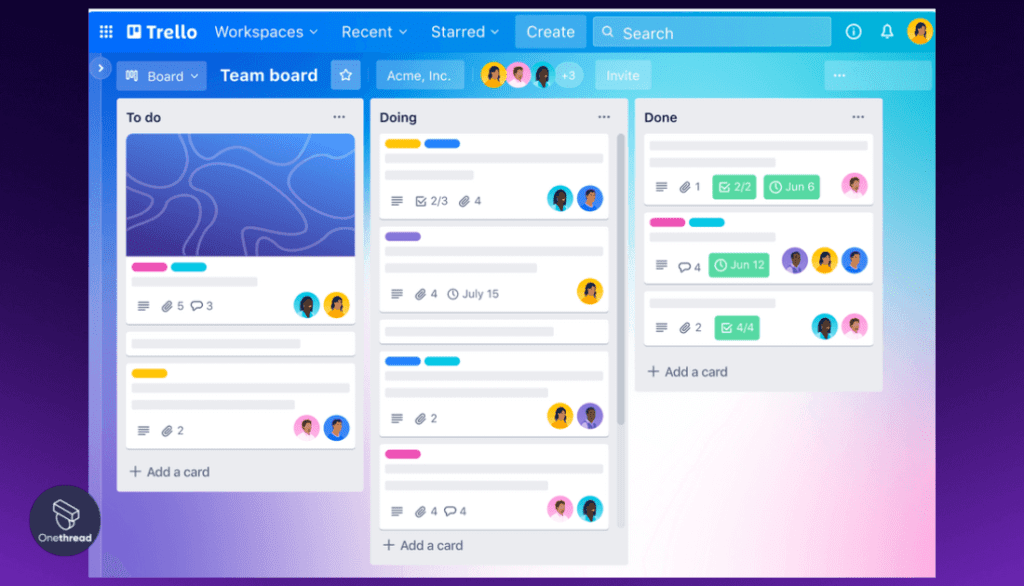
- Board and Card Automation: Trello allows businesses to create automated actions on boards and cards, such as moving cards to specific lists or assigning due dates.
- Integration with Power-Ups: Trello offers a wide range of Power-Ups, which are add-ons that provide additional functionality and automation capabilities.
- Customizable Workflows: With Trello’s flexible interface, businesses can create custom workflows and automate task management processes.
Pricing Plans and Enterprise Editions
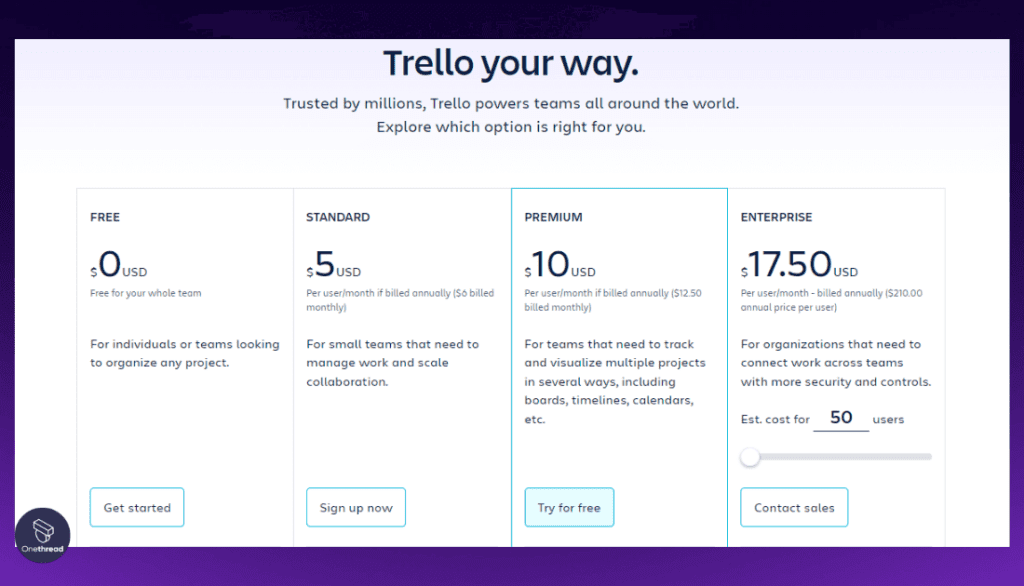
Trello offers free and paid plans, with additional features and functionality available in the paid versions. The pricing range is $5 to $17) in various plans.
User Ratings and Success Stories
Users have praised Trello for its simplicity, visual interface, and ease of use. While not specifically designed for task automation, businesses have utilized Trello to streamline their workflows and improve task management efficiency.
#14. Processmaker
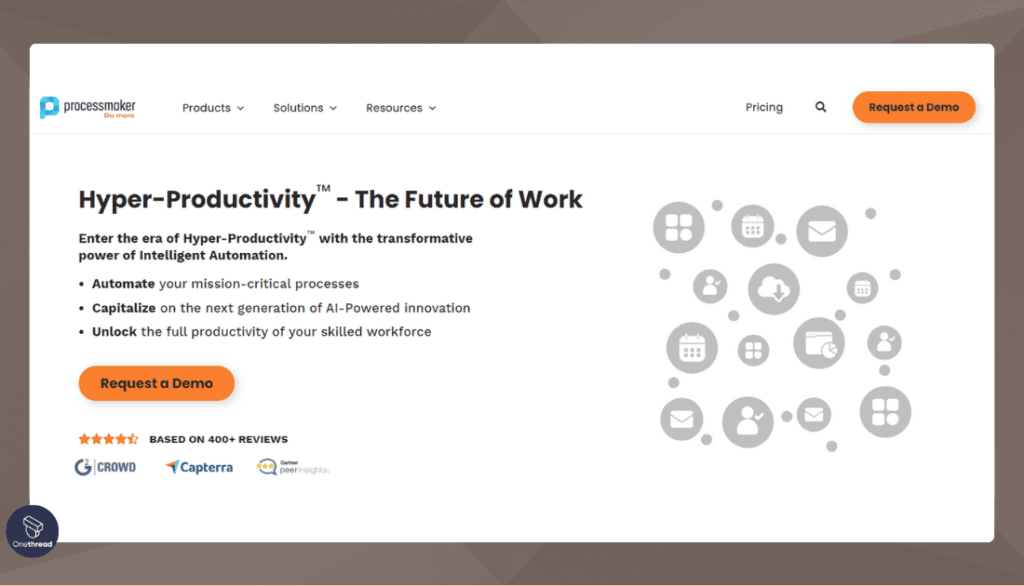
Processmaker is a comprehensive task automation software that specializes in business process management (BPM) and workflow automation. It offers a wide range of features to streamline and optimize complex business processes.
Key Features of Processmaker
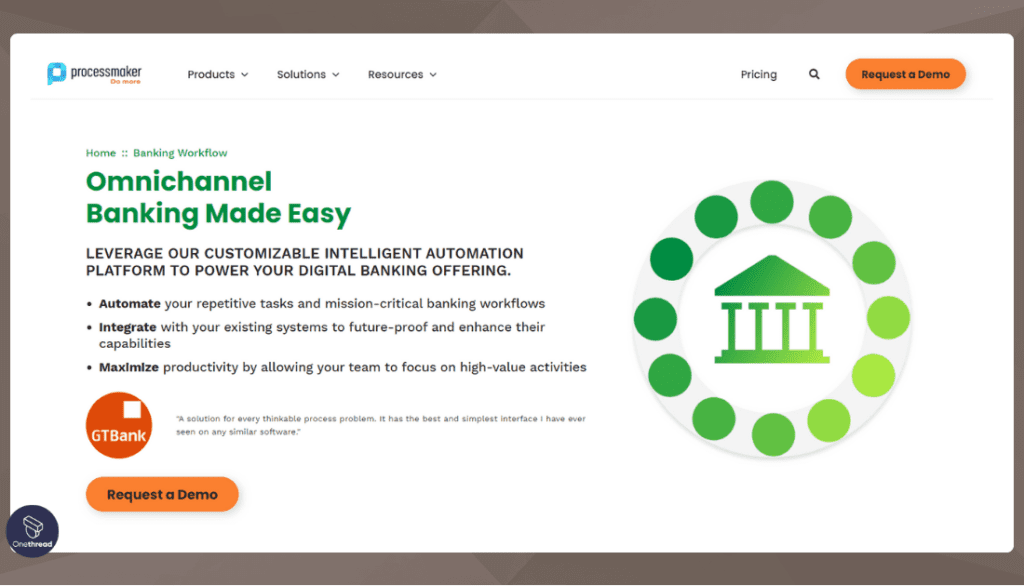
- Process Modeling and Design: Processmaker allows businesses to model and design their processes visually, making it easy to understand and automate complex workflows.
- Workflow Automation: With Processmaker, businesses can automate the flow of tasks and approvals, reducing manual effort and ensuring consistent execution.
- Form Builder: Processmaker provides a form builder that enables businesses to create custom forms for data collection and process initiation.
- Analytics and Reporting: Processmaker offers analytics and reporting capabilities to monitor process performance, identify bottlenecks, and make data-driven improvements.
Pricing Plans and Options
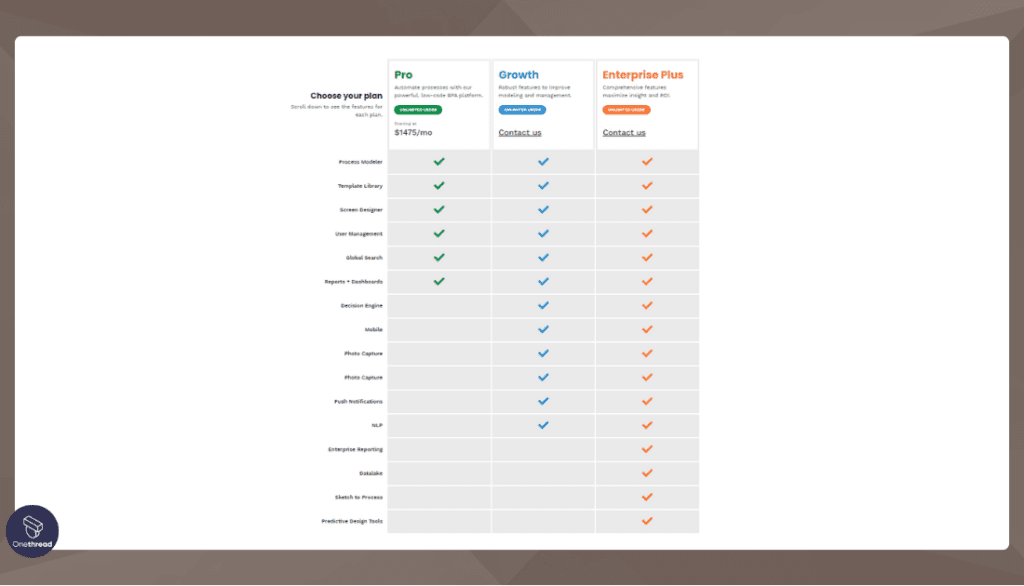
Processmaker offers various pricing plans to accommodate businesses of different sizes and needs. The pricing structure is based on the number of users and the level of functionality required, providing flexibility for task automation.
User Ratings and Reviews
Users have praised Processmaker for its robust automation capabilities, intuitive interface, and comprehensive BPM features. Positive reviews highlight how Processmaker has helped businesses automate their processes, improve efficiency, and achieve better control over their workflows.
#15. Hive
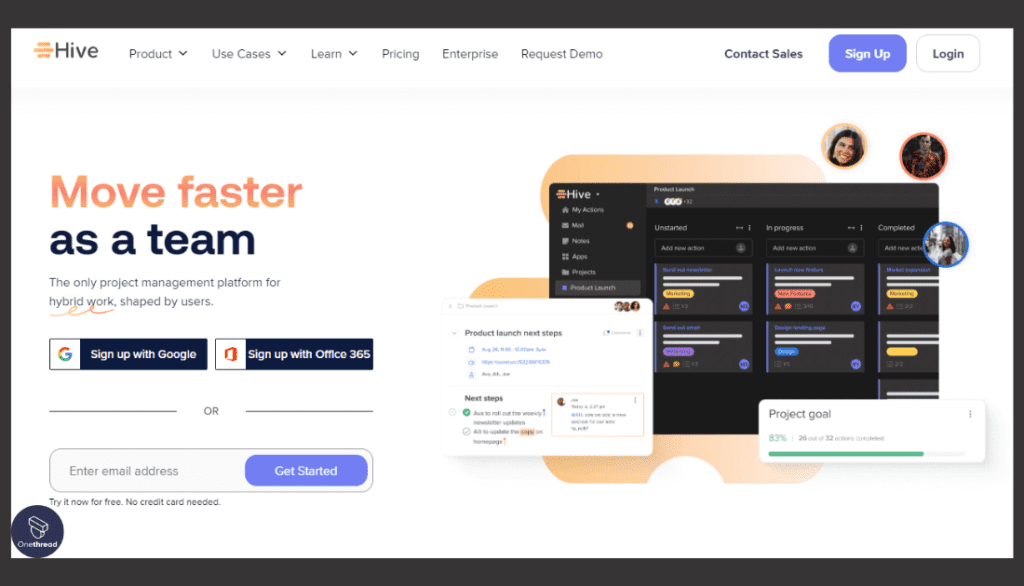
Hive is a collaborative task management software that combines project management, collaboration, and task automation features. It offers businesses a centralized platform to manage tasks, projects, and workflows.
Hive’s Key Features and Functionality
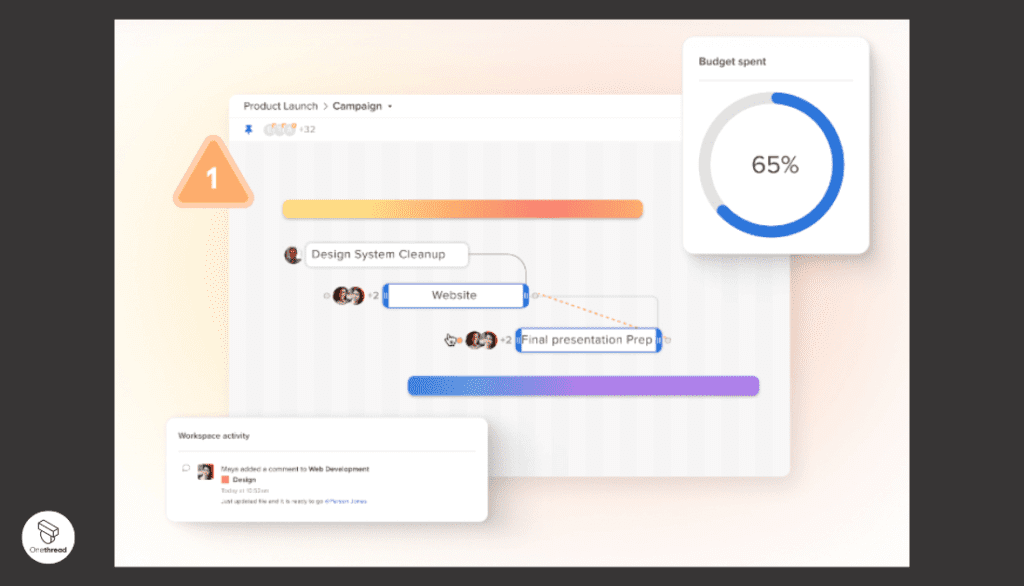
- Task Management: Hive provides a comprehensive task management system that allows businesses to create, assign, and track tasks efficiently.
- Project Collaboration: Hive offers collaboration features, including real-time messaging, file sharing, and commenting, to enhance teamwork and communication.
- Workflow Automation: Hive provides workflow automation capabilities to automate repetitive tasks and streamline business processes.
- Time and Resource Tracking: Hive offers time tracking and resource management features, enabling businesses to monitor project progress and allocate resources effectively.
Pricing Details and Subscription Plans
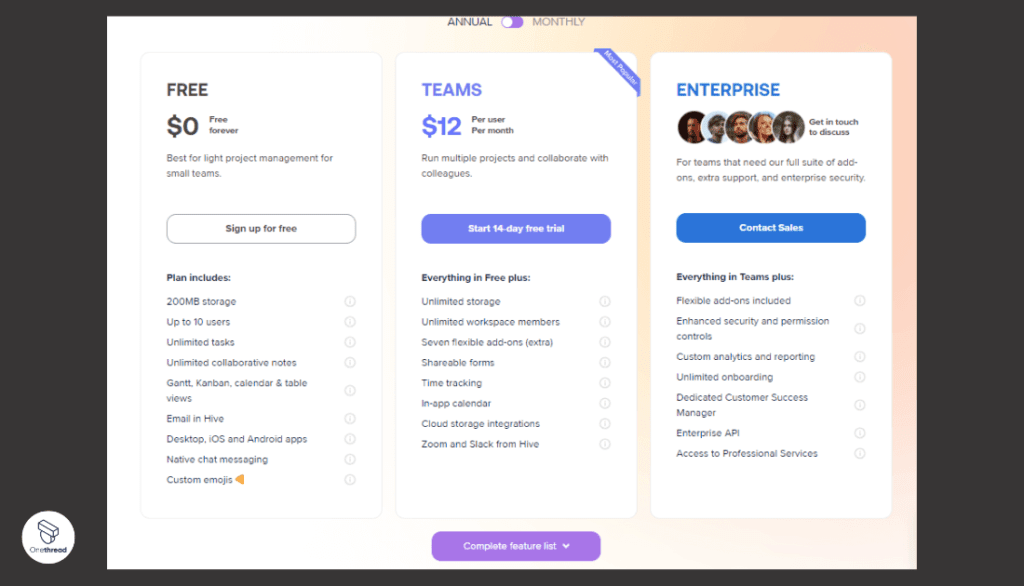
Hive offers various pricing plans to suit businesses of different sizes and requirements. You can use its limited version for free. Also, there are paid versions of $12 per user per month.
Customer Ratings and Testimonials
Customers have praised Hive for its user-friendly interface, seamless collaboration features, and robust task automation capabilities. Testimonials highlight how Hive has helped businesses streamline their workflows, improve team productivity, and achieve project success.
The Role of Task Automation Software in Businesses
How can task automation software benefit your business?
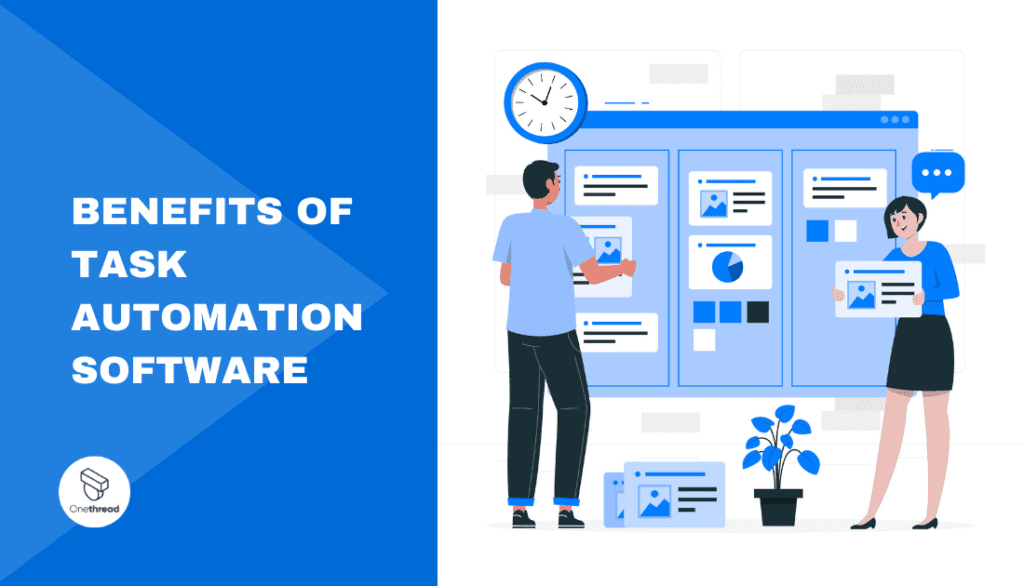
Task automation software offers businesses several benefits, regardless of size or industry. Some key benefits include
Increased Efficiency: Automation reduces manual effort and speeds up task execution, resulting in improved overall efficiency within the organization.
Cost Savings: By automating repetitive tasks, businesses can reduce labor costs and allocate resources more effectively, resulting in cost savings.
Improved Accuracy: Task automation minimizes the risk of human error, ensuring greater accuracy and consistency in task execution.
Enhanced Collaboration: Automation software often includes collaboration features that facilitate seamless communication, document sharing, and real-time updates, fostering teamwork and collaboration.
Better Resource Management: With automation, businesses can optimize resource allocation, ensuring that the right resources are available at the right time for task execution.
Regulatory Compliance: Automation software can help businesses comply with industry regulations and standards by ensuring consistent and auditable processes.
Competitive Advantage: Businesses that leverage task automation software gain a competitive edge by streamlining their operations, delivering faster results, and focusing on innovation.
Understanding the different types of task automation software:
Robotic Process Automation (RPA)
Robotic Process Automation (RPA) software enables businesses to automate rule-based, repetitive tasks that involve interacting with digital systems and applications. RPA bots mimic human actions and perform tasks on the user interface of various software applications.
RPA is particularly useful for tasks involving data entry, data extraction, validation, report generation, and other repetitive processes. It can integrate with existing systems and applications without the need for complex integrations or modifications.
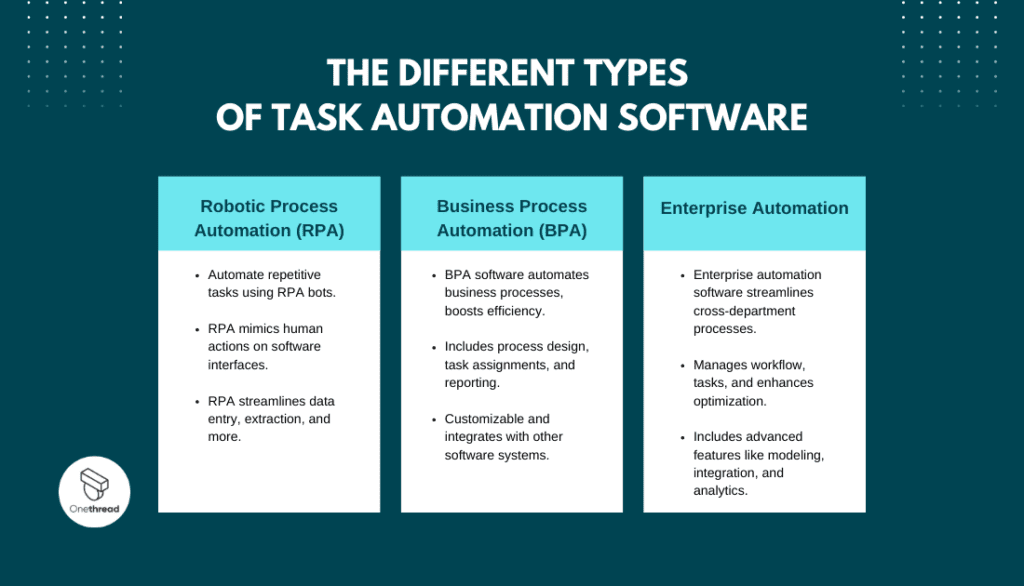
Business Process Automation (BPA)
Business Process Automation (BPA) software is designed to automate specific organizational business processes. It focuses on streamlining and optimizing individual processes to improve efficiency, reduce costs, and enhance customer satisfaction.
BPA software often includes features for process design, task assignments, notifications, approvals, and reporting. It can be customized to meet specific business requirements and integrate with other software systems.
Enterprise Automation
Enterprise automation software focuses on automating end-to-end business processes that span multiple departments and systems. It provides a comprehensive solution for workflow management, task coordination, and process optimization.
Enterprise automation software is typically used for complex business processes that involve multiple stakeholders, approvals, and dependencies. It offers advanced features such as process modeling, data integration, business rules, and analytics.
Choosing the Right Task Automation Software
Choosing the right task automation software is critical for businesses. It requires careful evaluation of various factors to ensure the selected software aligns with the organization’s needs and goals. Consider the following factors when selecting task automation software:
Factors to consider when selecting task automation software
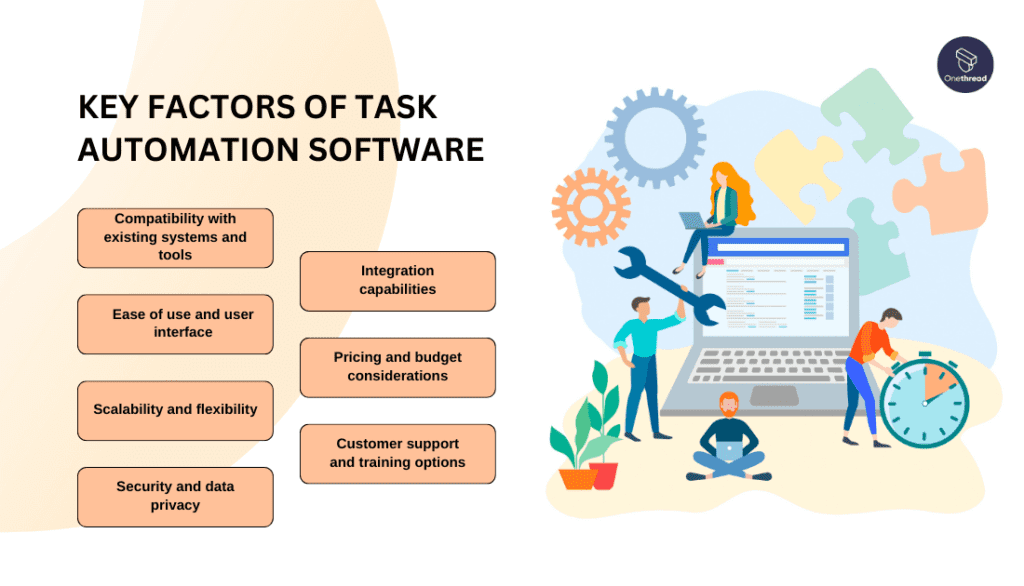
Compatibility with existing systems and tools
Evaluate whether the task automation software integrates seamlessly with your existing software systems, such as project management tools, CRM systems, or communication platforms.
Compatibility ensures smooth data flow and reduces the need for manual data entry or data duplication.
Ease of use and user interface
Look for task automation software that has an intuitive and user-friendly interface. The software should be easy to navigate and understand, even for non-technical users.
A clean, well-designed user interface enhances user adoption and reduces the learning curve.
Scalability and flexibility
Consider the scalability of the task automation software. Can it accommodate the growing needs of your business? Ensure that the software can handle an increasing volume of tasks and users without compromising performance.
Additionally, check if the software allows customization and configuration to adapt to your unique business processes.
Security and data privacy
Data security is a top priority for businesses. Evaluate the security measures implemented by the task automation software provider.
Look for features like data encryption, role-based access controls, and compliance with industry standards and regulations. Additionally, consider data privacy requirements and ensure the software provider adheres to relevant data protection laws.
Integration capabilities
Task automation software should offer robust integration capabilities to connect with other essential tools and systems used within your organization.
Check if the software provides pre-built integrations or APIs that allow seamless data exchange between applications. Integration capabilities enhance workflow efficiency and data synchronization.
Pricing and budget considerations
Evaluate the pricing structure of the task automation software and determine if it aligns with your budget.
Consider factors such as subscription fees, additional costs for advanced features or user licenses, and any hidden charges. Compare pricing plans of different software providers to find the most cost-effective option for your business.
Customer support and training options
Reliable customer support and training resources are essential for successfully implementing and adopting task automation software. Check if the software provider offers comprehensive support channels such as live chat, email, or phone support.
Additionally, inquire about training materials, documentation, and tutorials to ensure your team can effectively utilize the software’s features.
Tips for evaluating and comparing task automation software options
When evaluating and comparing different task automation software options, consider the following tips:
- Define your requirements: Clearly outline your business requirements and objectives for task automation. Identify the specific tasks and processes you want to automate and the desired outcomes. This will help you narrow down software options that meet your specific needs.
- Read customer reviews and testimonials: Research customer reviews and testimonials to gain insights into the real-world experiences of other businesses. Pay attention to feedback regarding ease of use, reliability, customer support, and overall satisfaction with the software.
- Request demos or trials: Request demos or trial versions of the task automation software to experience its functionality firsthand. This will allow you to assess its usability, features, and compatibility with your existing systems.
- Seek recommendations: Reach out to industry peers or consult with experts in task automation to get recommendations based on their experiences. They can provide valuable insights and help you make an informed decision.
- Consider future scalability: Anticipate future business growth and consider whether the task automation software can scale along with your organization. Evaluate the software’s ability to handle increased workload, additional users, and evolving business processes.
- Assess vendor reputation and reliability: Research the reputation and reliability of the task automation software provider. Look for established vendors with a track record of delivering quality software and providing ongoing updates and support.
Remember, choosing the right task automation software is a long-term investment that can significantly impact your business efficiency and productivity. Take the time to evaluate and compare different options to find the software that best aligns with your needs and goals.
Task Automation Examples: Streamlining Workflows Across Industries
Task automation software can streamline workflows and improve efficiency across various industries. Here are a few examples of how task automation can be applied in different business contexts:
Marketing Campaign Task Automation
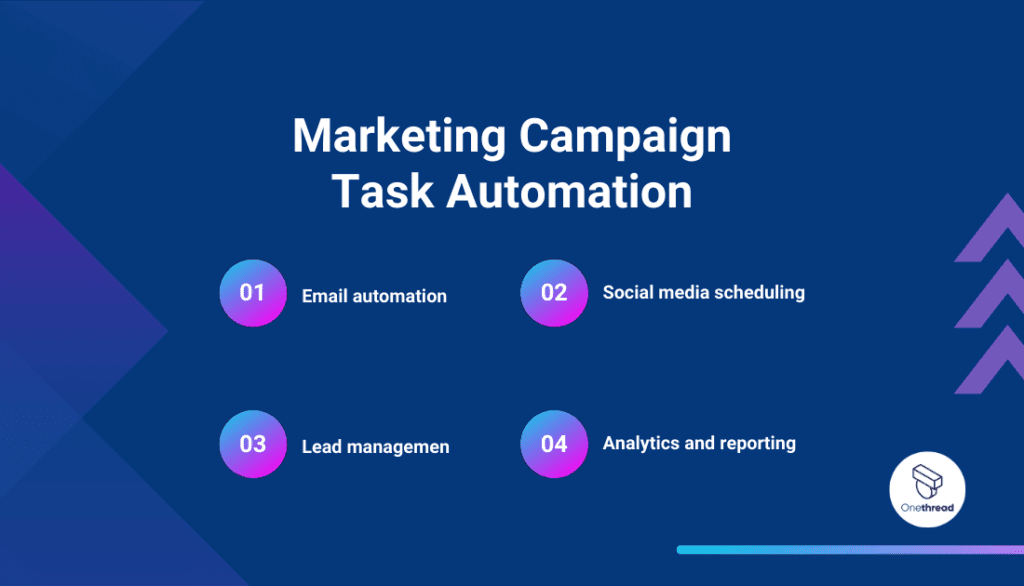
In the marketing industry, task automation can enhance campaign management and streamline marketing workflows. Examples of marketing campaign task automation include:
- Email automation: Automating email campaigns by setting up triggers and workflows to send personalized and timely emails to prospects and customers.
- Social media scheduling: Using automation tools to schedule and publish social media posts across multiple platforms, saving time and ensuring consistent posting.
- Lead management: Automating lead capture, scoring, and nurturing processes to qualify leads and route them to the appropriate sales representatives.
- Analytics and reporting: Automating data collection and report generation to track marketing campaign performance, such as website traffic, conversions, and ROI.
Invoice Task Automation
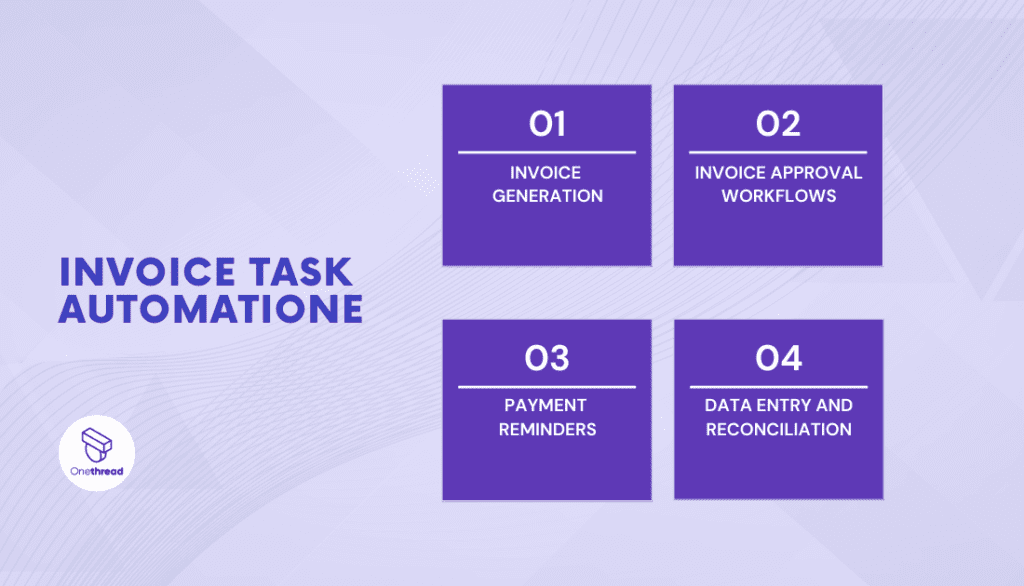
Automation can greatly simplify invoice processing and reduce manual effort in finance and accounting departments. Examples of invoice task automation include:
- Invoice generation: Automatically generate invoices from predefined templates and populate them with relevant customer and transaction data.
- Invoice approval workflows: Implementing automated approval workflows to route invoices to the appropriate stakeholders for review and approval, reducing delays and streamlining the process.
- Payment reminders: Automating sending payment reminders to customers based on predefined triggers or due dates.
- Data entry and reconciliation: Automating data extraction from invoices and reconciling them with financial systems, minimizing errors and improving accuracy.
HR Task automation
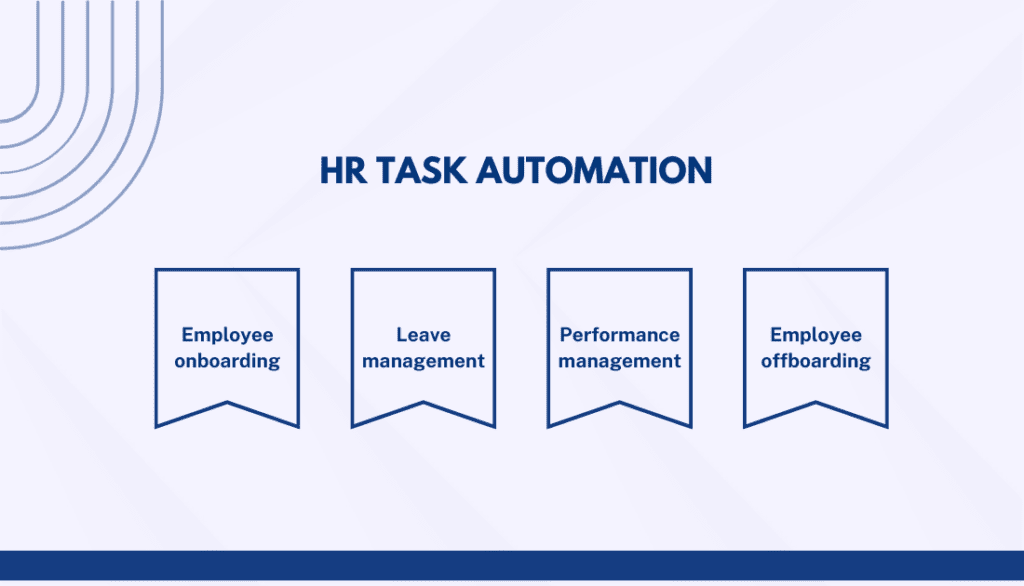
In the human resources field, task automation can simplify administrative processes and improve employee experience. Examples of HR task automation include:
- Employee onboarding: Automating the onboarding process by generating offer letters, collecting necessary documents, and initiating access requests for systems and resources.
- Leave management: Implementing a self-service portal for employees to request and manage leave, with automated workflows for approval and tracking.
- Performance management: Automating performance evaluation processes, including setting goals, capturing feedback, and generating performance reports.
- Employee offboarding: Streamlining the offboarding process by automating tasks such as revoking system access, retrieving company assets, and conducting exit interviews.
Other industry-specific task automation examples
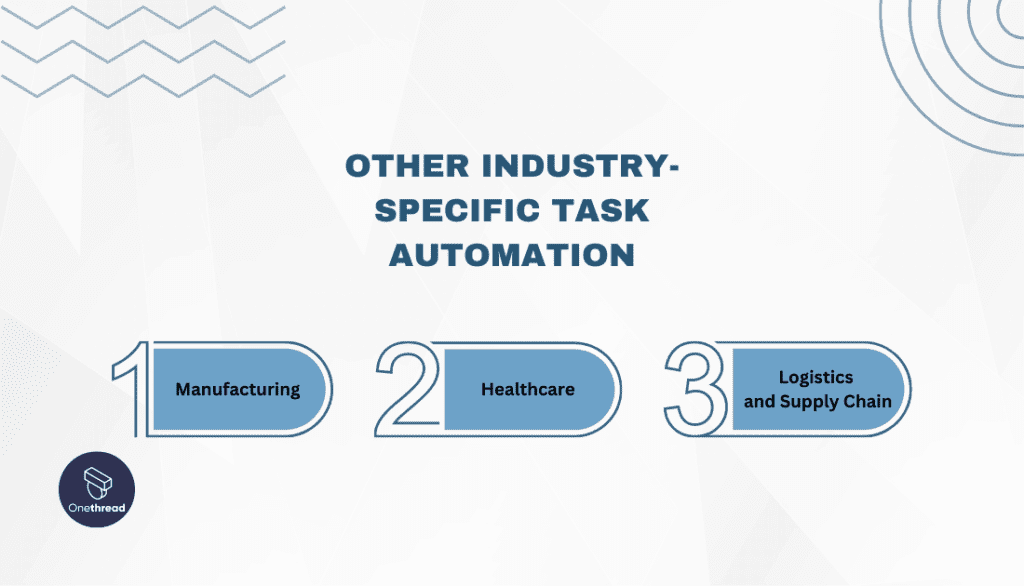
Task automation can be applied to various other industries and processes, depending on specific needs and requirements. For example:
- Manufacturing: Automating production line processes, inventory management, and quality control to improve efficiency and minimize errors.
- Healthcare: Automating patient appointment scheduling, medical record management, and billing processes to enhance patient care and streamline administrative tasks.
- Logistics and Supply Chain: Automating order processing, shipment tracking, and inventory management to improve order fulfillment and optimize supply chain operations.
By implementing task automation software, businesses across industries can achieve significant time savings, increased accuracy, and improved efficiency in their workflows.
Future Trends in Task Automation
The evolving landscape of task automation
Task automation is a rapidly evolving field, driven by advancements in technology and the growing need for efficiency and productivity. Several trends are shaping the future of task automation:
Intelligent Process Automation (IPA): The convergence of task automation with artificial intelligence (AI) and machine learning (ML) is leading to the development of Intelligent Process Automation (IPA).
IPA combines the capabilities of RPA with AI and ML algorithms to automate complex decision-making processes, enabling systems to learn from data and improve over time.
Hyperautomation: Hyperautomation refers to the integration of multiple automation technologies, including RPA, AI, ML, and process mining. This holistic approach aims to automate end-to-end processes, optimize workflows, and achieve greater operational efficiency.
Low-code/No-code Automation: Low-code/No-code Automation: Low-code and no-code platforms, comprising those specializing in low-code workflow automation, empower business users with little or no coding experience to create, deploy, and manage automated workflows and applications efficiently.
These platforms simplify the automation development process, enabling businesses to build and customize automation solutions rapidly.
Integration of Robotic Process Automation with Other Technologies: RPA is being integrated with other technologies such as chatbots, natural language processing (NLP), and optical character recognition (OCR) to expand automation capabilities and enable more sophisticated automation solutions.
How Might Task Automation Look Like in The Near Future?
Emerging technologies and trends in task automation can safely let us assume that these changes might come along in the field of task automation:
Process Discovery: Process discovery tools use AI and ML algorithms to identify and document existing processes within an organization automatically. These tools provide insights into process inefficiencies and help identify areas that can be automated.
Intelligent Document Processing (IDP): IDP combines OCR, NLP, and AI technologies to automate the extraction and processing of information from unstructured documents such as invoices, contracts, and forms.
Cognitive Automation: Cognitive automation utilizes AI technologies to enable systems to understand and process complex data, make intelligent decisions, and automate cognitive tasks that require human-like reasoning and judgment.
Robotic Desktop Automation (RDA): RDA focuses on automating tasks at the user interface level, interacting with desktop applications and systems to perform actions and extract information.
The potential impact of artificial intelligence (AI) and machine learning (ML)
AI and ML technologies have the potential to revolutionize task automation by enabling systems to learn, adapt, and make intelligent decisions. By leveraging AI and ML, task automation software can:
Improve decision-making: AI algorithms can analyze large volumes of data, identify patterns, and make informed decisions, reducing the need for manual intervention.
Enhance predictive capabilities: ML models can analyze historical data to make accurate predictions about future outcomes, enabling proactive decision-making and optimization of processes.
Enable natural language processing: AI-powered natural language processing enables automation software to understand and respond to human inputs, making automation more intuitive and user-friendly.
Support advanced analytics: AI algorithms can uncover insights and trends from complex datasets, helping businesses gain valuable business intelligence and make data-driven decisions.
Drive continuous improvement: ML algorithms can learn from data and identify opportunities for process optimization, enabling businesses to achieve continuous improvement and higher levels of efficiency.
As AI and ML technologies continue to advance, their integration with task automation software will unlock new possibilities and empower businesses to achieve higher levels of automation and efficiency.
Conclusion
Ready to take your business to the next level with task automation? Explore the top task automation software options mentioned in this guide and start streamlining your workflows today. Remember, automation is the key to unlocking your business’s true potential.
Businesses can focus on strategic initiatives, achieve cost savings, and deliver improved customer experiences by automating tasks.
By choosing the right task automation software and considering factors like compatibility, ease of use, scalability, security, integration capabilities, pricing, and customer support, businesses can optimize their operations and achieve significant productivity gains.
